We have been reviewing – or at least examining – speedloaders here since RevolverGuy’s very beginning. I will admit that a lot of our speedloader reviews have been shaped by my personal preferences and bias. Today I’m going to attempt to add some objectivity to the question, “what is the best revolver speedloader?”
I set out to answer this question over two years ago. Finding the time and the appropriate space to run this test took some time, as did deciding exactly what the test would consist of. Conducting this test took quite some time, both in time spent on the range, and overall time to put this together. I’m sure it’s not completely comprehensive (I’m certain someone will immediately spot a loader I missed or a test I should have performed) but I am equally sure it will still be useful to someone.
Due to its ridiculous length, this article is broken into three parts. Part I is an explanation of the test criteria. Part II is the results of the test, organized by loader. Part III contains some discussion and some conclusions I gathered while conducting and writing this evaluation.
Part I: The Best Revolver speedloader Test
I tried my best to take all the factors of a speedloader into account. Of course a “speed” test is included, but there are also factors like availability and size that come into play in the real world. As you will see, I attempted to standardize equipment and technique to the extent possible to minimize variables. I attempted to capture a good sample size of reloads with each speedloader.
Additionally, I tried to test as many speedloaders as possible. Though I have some biases against particular models I didn’t want to leave anything out and I tried to be as objective as possible. The speedloaders I tested were (in alphabetical order): 5-Star L6-357, CKT Ripcord, HKS, JetLoader, Pachmayr Aluminum Competition, Revision CV Ammo Pod (added 24 January 2020), S.L. Variant, Safariland Comp I/II/III, and Speed Beez.
This was far from a perfect test, however. There is some inherent bias in this test. I was the only tester involved, so all the results here are based on my performance alone. There are some problems with that. First, as you will see I am not the fastest revolver reloader. This is due in part to my choice of using the Universal Revolver Reload. It is also due in part to my level of automated skill and current practice. If you’re looking for lightning fast numbers you won’t find them, but these numbers should still be useful for comparative purposes. Also my gun, my choice of ammo, and other individual factors may come into play with a sample size this small.
Let’s look at the elements of the test. I will then talk about each speedloader individually, and wrap up with my assessment of what is the “best” revolver speedloader.
Test Criteria #1: Speed
Speedloaders are designed for one thing: speed. I wanted to get an objective measure of what reloaders (if any) were actually faster than others. The first phase of the test evaluated the raw speed of each reloading method.
Equipment: For the sake of consistency, I attempted to use the same equipment to the extent possible. Admittedly this was not always possible because different loaders fit different pouches, etc. I feel that I generally succeeded here.
-
- Primary Revolver: I used the same revolver for all tests: a S&W 686-3. I tested all loaders possible with the L-Frame 686 because it has the largest variety of loaders available to it. This 686-3 used in the test is completely stock, save for the grips, and has no cylinder chamfering or other modifications. The grips are VZ Grips Tactical Diamonds.
-
- Secondary Revolver: since most people who carry revolvers carry J-Frames, I thought it was important to test at least a few loaders with a J-Frame. I used my S&W 640 Pro Series, and only tested a few loaders (Safariland Comp I, Pachmayr Aluminum Competition, and JetLoader). Instead of drawing them from a pouch, I drew them from my hip pocket. This isn’t a apples-to-apples comparison with the L-Frame from a belt-carried pouch, but a slightly alternate look at reloading with a speedloader.
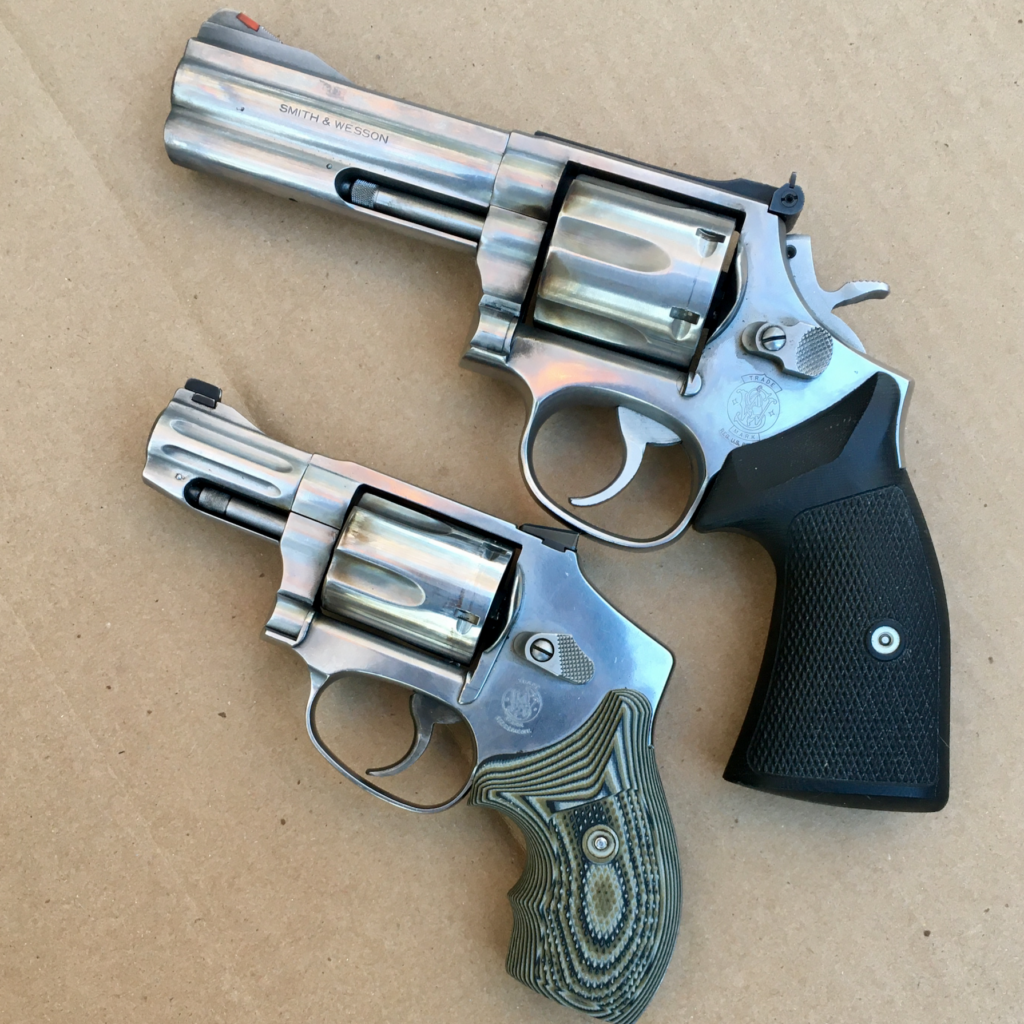
-
-
- Ammunition: Ammunition can alter attempts at fast reloading by hanging up on the cylinder or otherwise being difficult to seat in the chambers. Again, in an attempt to reduce variables, I used ammunition with the same bullet style: FMJ flat point or FMJ round nose. Because this test occurred over several months, I used several brands of ammunition, but always with a FMJ-FP or FMJ-RN. For most testing I used .38 Special. For two reloaders (the S.L. Variant and the L-Frame Jetloader) I had to use .357 Magnum ammo due to availability. I used ammunition of the same bullet style (FMJ-FP), and and the Perfecta ammo was relatively light. I don’t feel that it impacted the test positively or negatively.
-
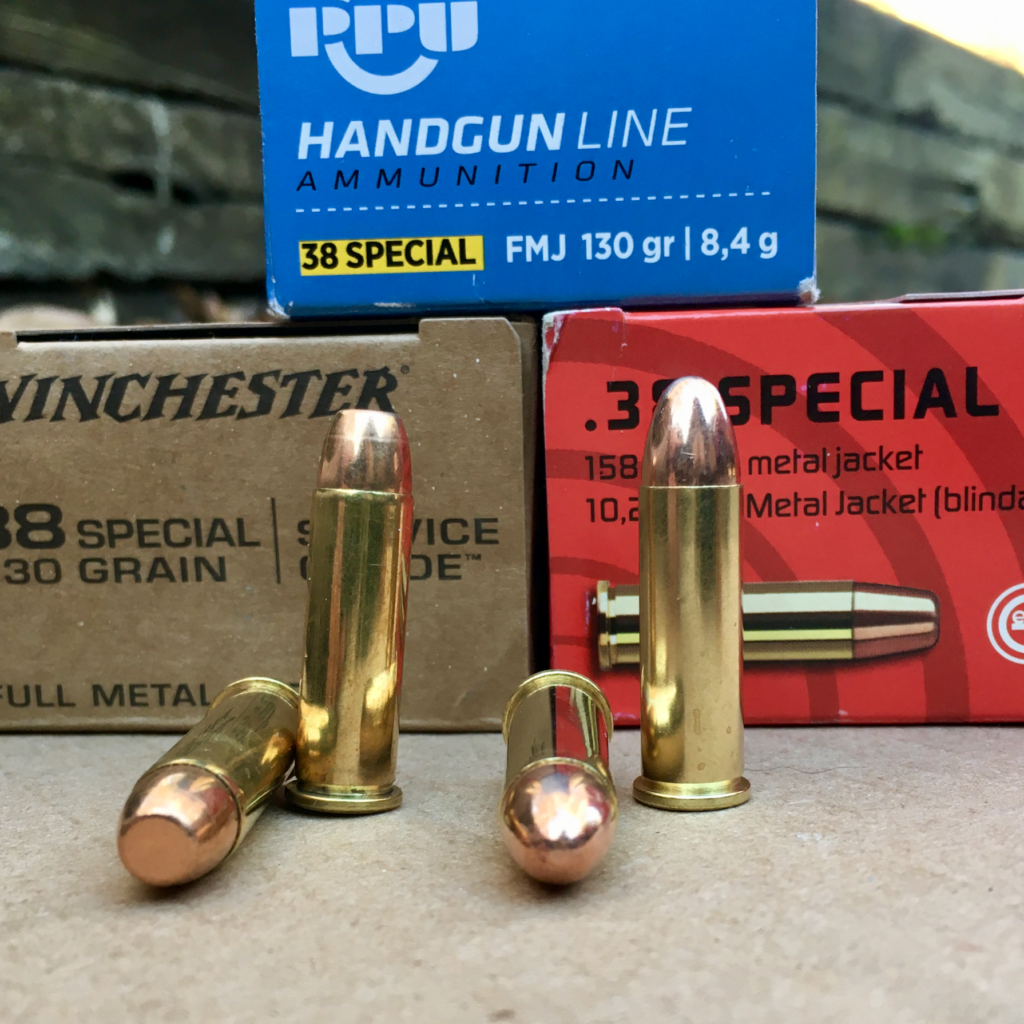
-
- Speedloader holders: There are probably as many ways to carry a speedloader as there are speedloaders. I tried to make the retrieval of the loader as consistent as possible. I positioned the holder forward of my holster on my strong side, and found a solution for almost every loader that didn’t require undoing a snap or flap. I used JOX Loader Pouches for every loader that I could. For one speedloader I used the DeSantis Second Six pouch but let the flap unsnapped and folded back out of the way.
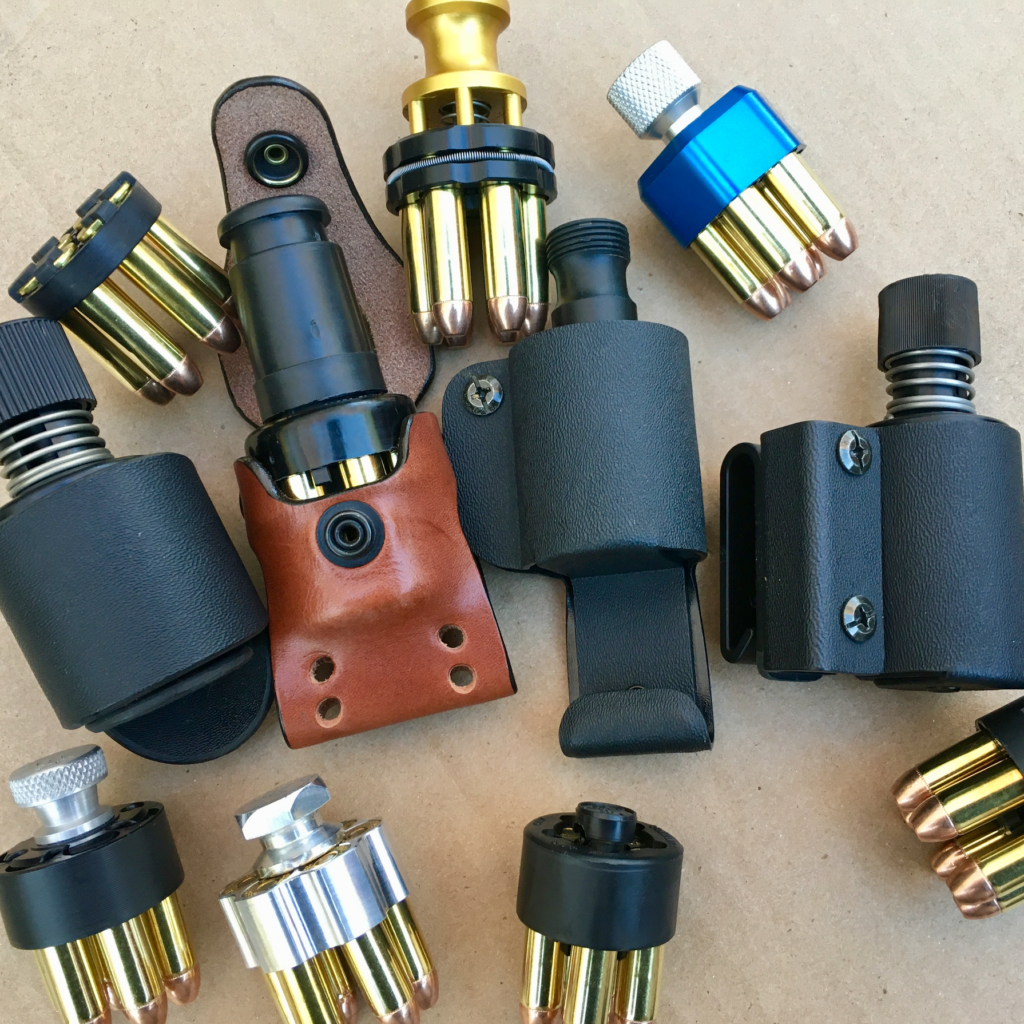
Procedure: I began with the cylinder loaded with a single round, and the fully-loaded speedloader stowed in an appropriate pouch, in the appropriate position (just forward of my holster, strong side), and concealed under a single cover garment (t-shirt). At the buzzer I fired one shot, conducted a reload, and fired another shot. The split time between the first and second shot were recorded.
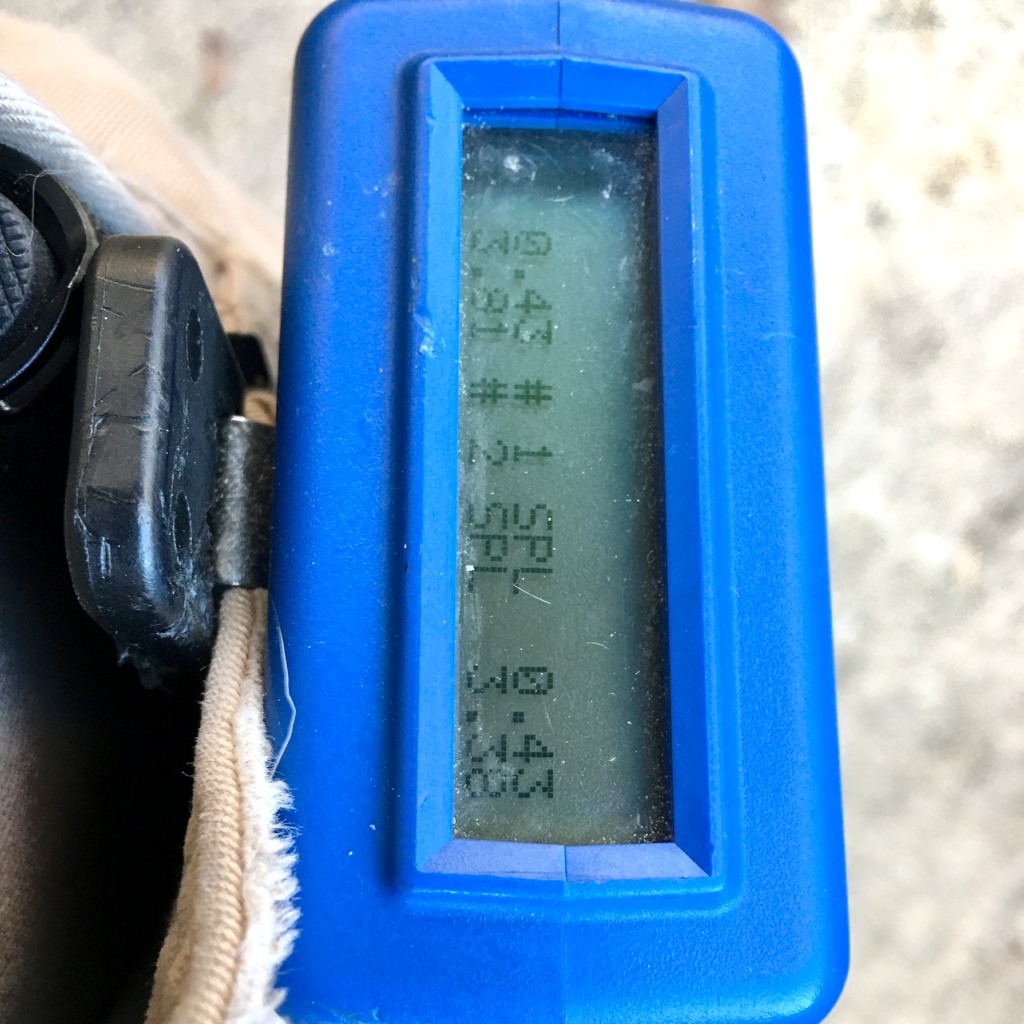
I also held myself to something of an accuracy standard. Rather than wildly firing shots downrange after the reload to get better times, I required a re-shoot for any shots falling outside the 9-ring on the reduced-size silhouette I used for testing. I don’t feel that this target was onerously small as to significantly reduce my times, nor was it so large as to be completely meaningless. Range was 5 yards.
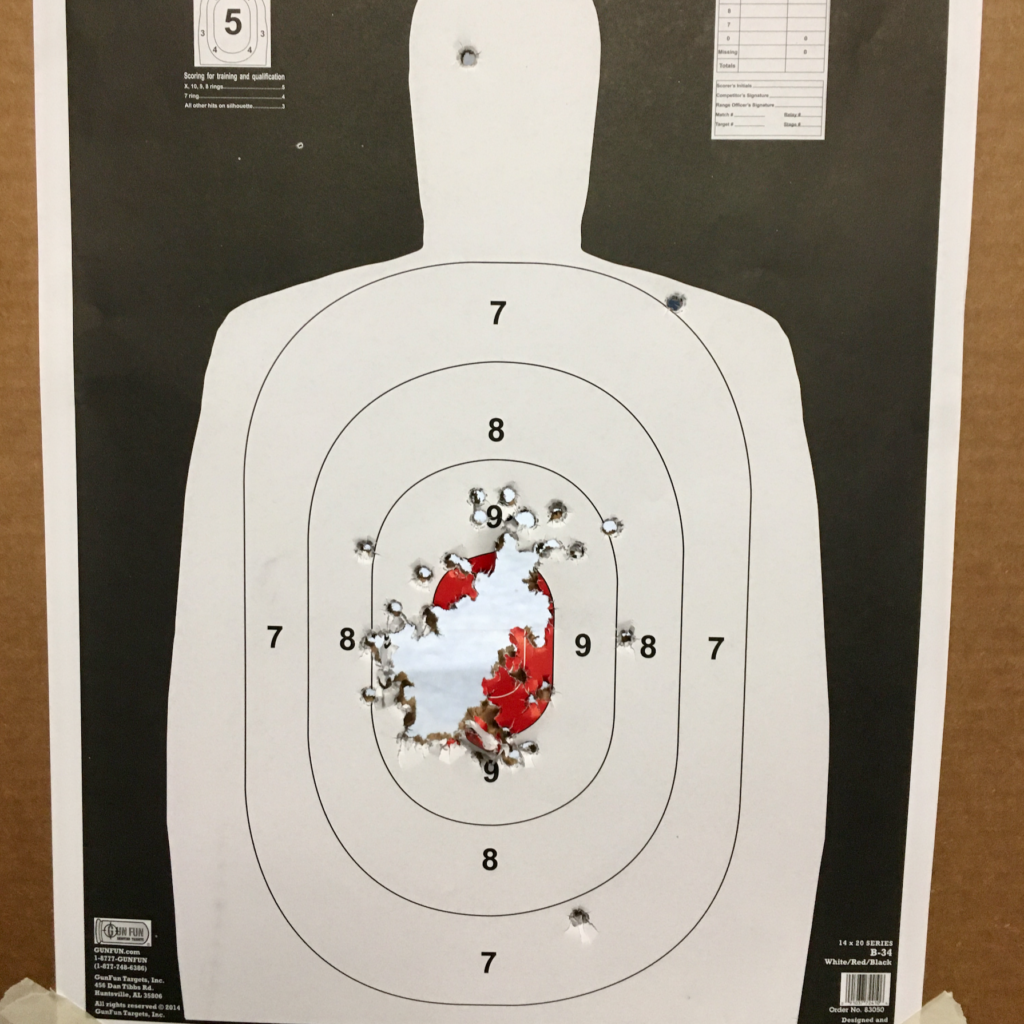
Alibi Relays: I did re-shoot some relays. I attempted to be as fair as possible with every loader tested. I discarded relays in which I dropped the loader, clothing interfered with a clean draw, or other factors occurred that would slow the time excessively, but were obviously not the fault of the loader. Some relays were lost because the timer failed to record them, or my timer responded to another shooter on the line.
Though my goal was 15 iterations with each loader tested, I sometimes failed to achieve this. On a couple of occasions I simply ran out of time or ammunition. I fired and recorded a minimum of 12 iterations with each loader tested.
Practice: I did a few practice runs with each prior to shooting times for the record. This usually consisted of one or two dry runs, and one or two live (but unrecorded) runs.
Test Criteria #2: Lost Rounds
Occasionally, near the end of a reload, a shooter will withdraw the speedloader and find a round or two coming with it. It also seems that some loaders are far more prone to this than others; I don’t recall this ever happening with an S.L. Variant (the speedloader I have spent, by far, the most time using). I recorded instances of of extracted/dropped/lost rounds.
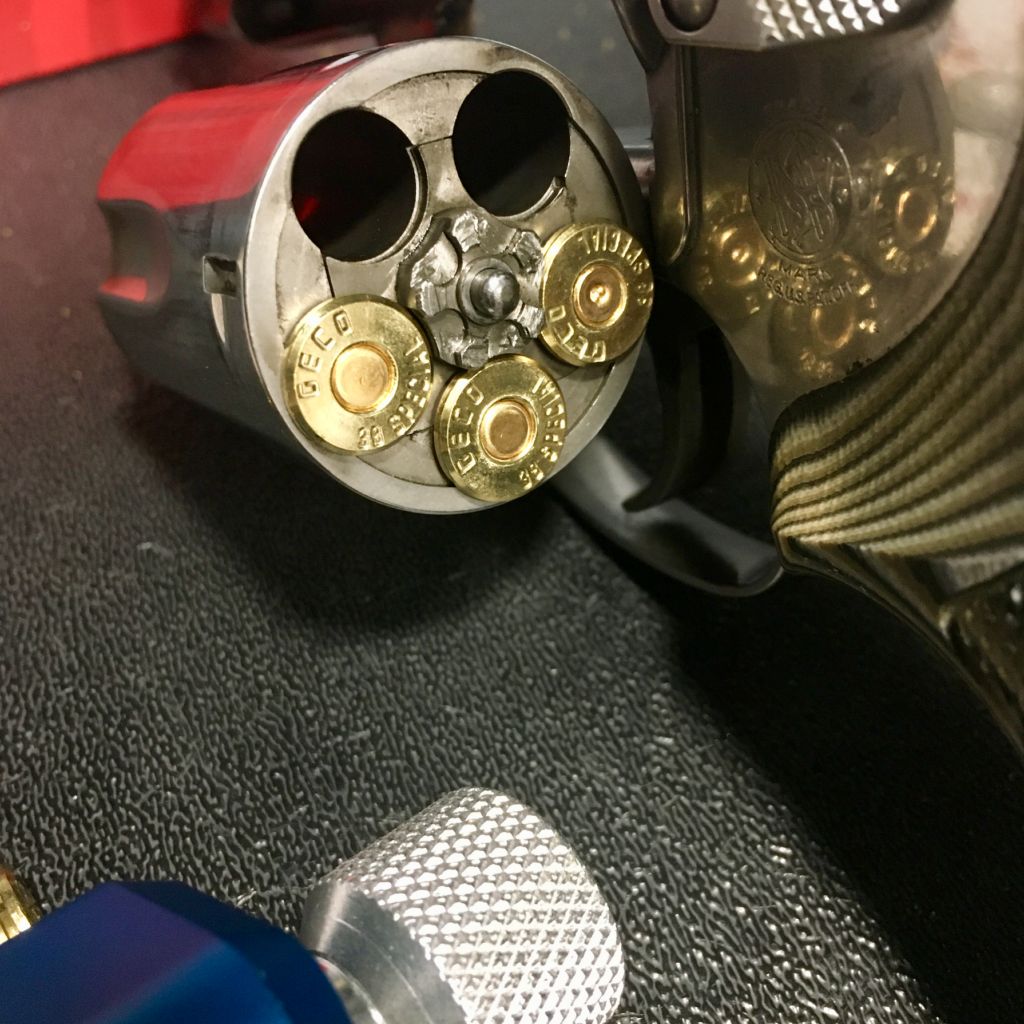
Test Criteria #3: Drop Test
One thing that crops up in serious revolver circles is whether a given speedloader will hold onto its rounds when dropped. I think this is important for two reasons. First, if a speedloader is dropped in a gunfight it would be nice if it held onto its cargo, preventing its owner from having to locate and recover half a dozen loose rounds. I also think this might be important from a durability standpoint. Obviously we want our gear to last, but we also want to know that gear used on the range is still good-to-go when we leave the range and head back out on the street.
-
- Equipment: I conducted this test using nothing more than the loader being tested, and a full compliment of ammunition. For ammunition I used Perfecta .357 Magnum 158-grain FMJ. I used this ammo for two reasons. First, it is longer than .38 ammo which creates additional leverage, and it is heavier than .38 ammo, creating the most difficult test condition. If a speedloader will retain this ammo under this condition, it should be fine with lighter-weight .38 ammo. Second, this is inexpensive ammo, and I knew ammo used in the drop test was going to get banged up, and I didn’t want to ruin expensive premium ammunition.
-
- Procedure: I dropped each loader three times from chest height onto my concrete driveway. I feel that this is about as hard a surface as a loader could expect to be dropped on, and a chest height about as far as it could reasonably expected to be dropped. I grasped each loader with two fingers, and held it at my solar plexus. I attempted to have each loader land on its side, rounds downward, and top down. Sometimes this took more than three drops; I found it fairly easy to get the loader to land on its top or rounds-down, but the weight of the rounds made a side-landing difficult to achieve. Several loaders were dropped several times to achieve this.
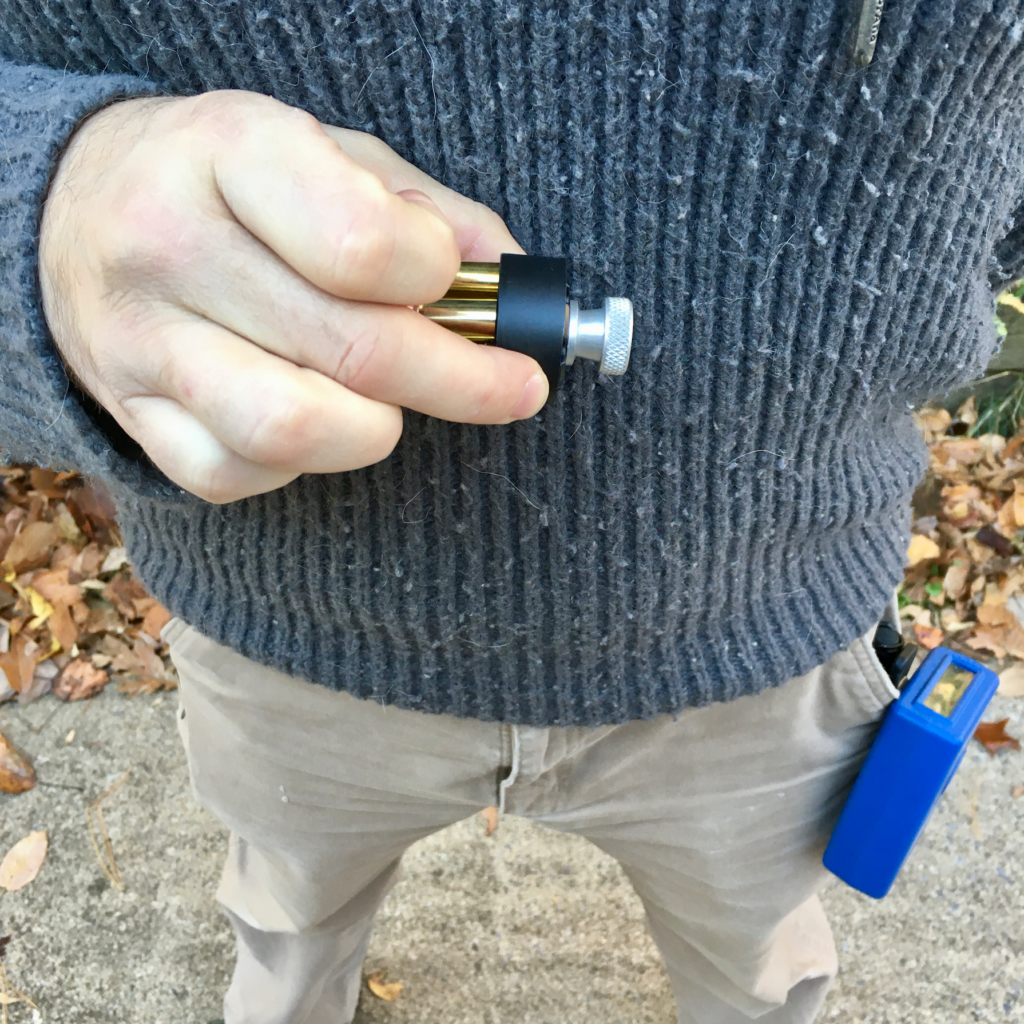
Between drop attempts I would completely unload (if necessary) and freshly reload each speedloader so it is surviving only one attempt, not cumulative attempts. I wasn’t sure about the validity of this test until the results started coming in, and decided this was pretty important to include.
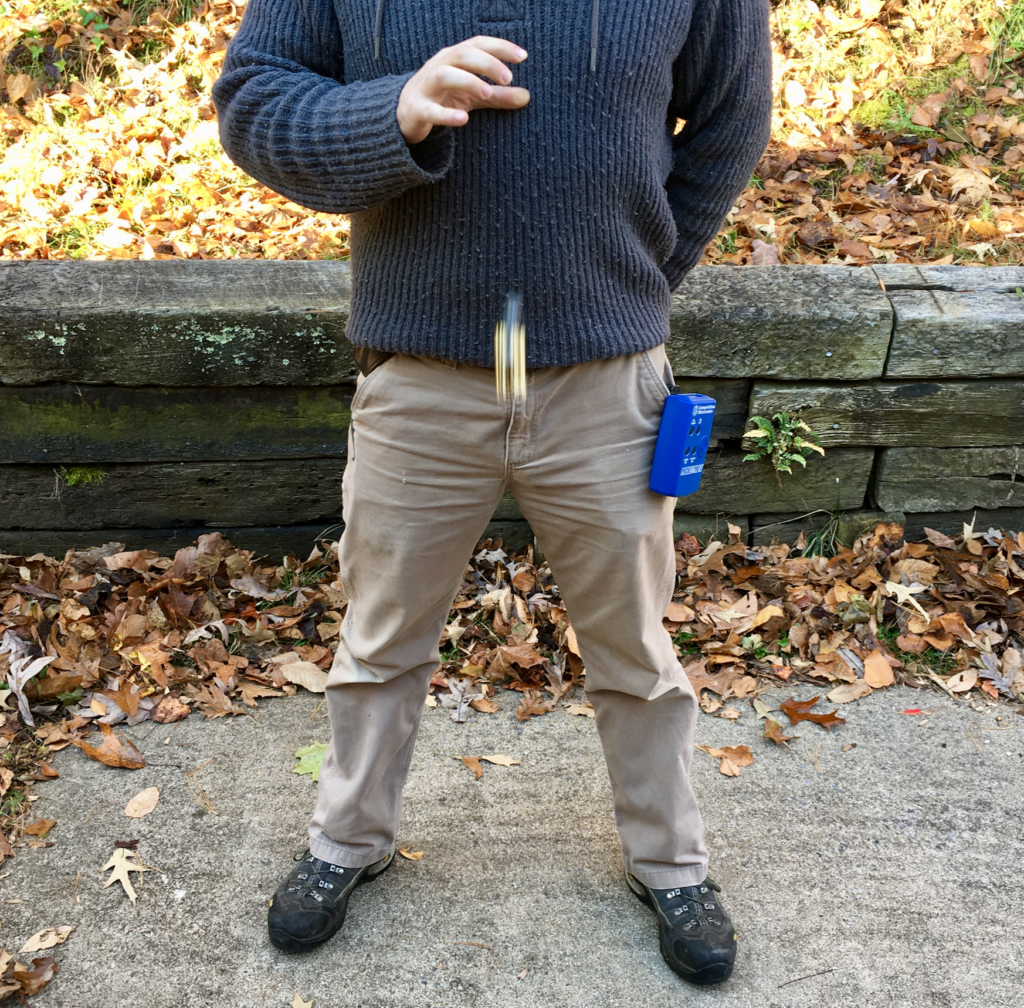
Note: in all cases drop testing was conducted AFTER range testing so that I was not working with potentially damaged speedloaders on the range.
Test Criteria #4: Size
The size of a speedloader has a direct impact on one’s ability and/or willingness to carry it. In fact, size may be the chief criteria in determining the best revolver speedloader for some. Some of the competition loaders are presumed to be faster but at the expense of greater size. I decided to measure two metrics as they pertain to size: the width of the loader at its widest point, and the height when loaded.
Since many individuals who carry concealed revolvers carry them loaded with .38 Special ammunition, I decided load each loader with a common defensive .38 load to measure the height (or in the parlance of my favorite YouTuber, Advanced Knife Bro, “tallness”). The load I used is the Winchester PDX1 Defender 130-grain JHP. If you are carrying .357 ammo, expect to add 1/10th of an inch to that measurement. Also, there are certainly minor variations in length of various bullet styles, but a common factory loading will give us a common basis for comparison.
Criteria #5: Availability
Though it might no seem so, availability is perhaps the most important criteria here. If a speedloader is the best revolver speedloader in every other regard but is not available for your revolver, it doesn’t really matter. I didn’t come up with a super objective way to measure availability, so I resorted to:
Excellent: supports a wide array of manufacturers and calibers other than .38 Special/.357 Magnum,
Average: Only supports standard S&W frame sizes (J, K, L) and analogs,
Poor: only supports one or two revolver frame sizes and one caliber (typically .38 Special/.357 Magnum)
Not Factored: Cost
One factor I briefly considered including was cost. There is a fairly wide difference in cost between the various speedloaders, from roughly $5 to almost $40 each. Ultimately I decided not to include this as a criteria and I’m going to explain my rationale. This might smack as a bit elitist, but the firearms we carry are life-support equipment.
First, the purchase of a speedloader presupposes the purchase of a revolver and a willingness to accept the higher inherent cost of ammunition over 9mm (or .380, .40 S&W, or .45 ACP). Spending as much as $20 more on a speedloader that is objectively better seems only prudent, especially considering you only need a handful of speedloaders, as they don’t typically wear out as quickly as pistol magazines. I also balanced this with a degree of reasonableness; I wouldn’t expect or encourage anyone to purchase S.L. Variant speedloaders that run into the three-digit price range, if you can even find them.
I’m also not saying that more expensive always equals better; I am saying that I certainly wouldn’t exclude a loader based on cost alone. But I also wouldn’t choose a loader based on cost alone; the CKT Ripcord is the cheapest loader in this review and though I’m trying to be objective and refrain from making hard judgments, there’s no way I would ever recommend it to anyone. If low cost is a bonus, great, but I wouldn’t base my self-defense decisions on the difference of $10 or $15.
Part II: Test Results
With an explanation of the test procedures and the rationale behind them out of the way, let’s get into the results. I’ve organized this by speedloader, in alphabetical order. If you’re a chart junkie and just want to see the results, there are some graphics at the bottom of this section that compare loaders to each other.
5-Star Firearms L6
I reviewed the 5-Star Firearms speedloader way back in July of 2017. Overall the fit and finish of this loader are excellent. I also really like the relief between each cartridge, and find this makes it a little easier to maneuver in the confined space between a cylinder and frame/grip. The biggest complaint some people have is that the release knob turns opposite the HKS’s. Personally, I have no complaint about this as I haven’t worked substantially with either. Further, I believe this is completely surmountable through dry practice.
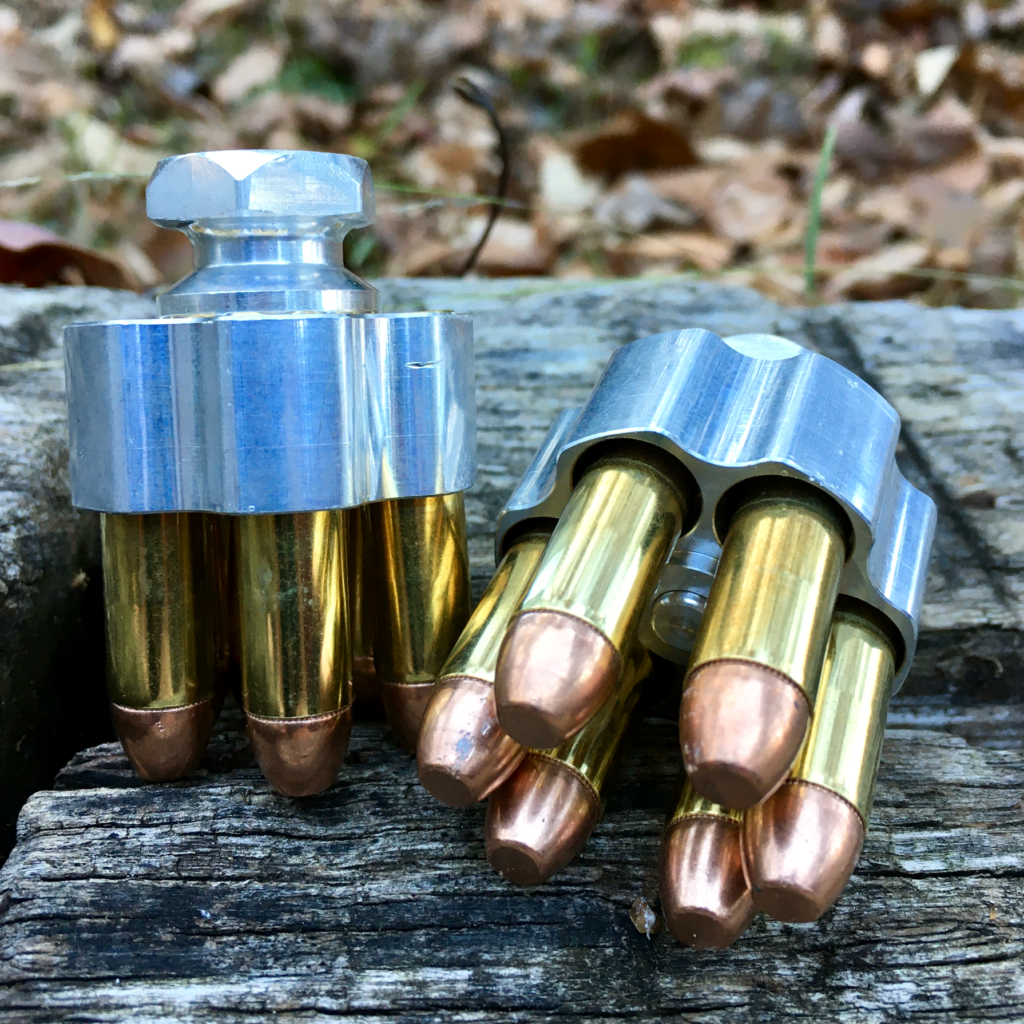
I ran the 5-Star loader from a Jox Loader Pouch designed for the HKS/Comp II Loader. It wasn’t a perfect fit, but good enough for our purposes here.
Iterations: 14
Speed Test Average: 5.392 seconds
Speed Test Fastest: 4.18 seconds
Speed Test Slowest: 7.24 seconds
Lost Rounds: Yes, lost one round on run 8
Drop Test: 100% Pass
Size: 1.475″ diameter, 2.105″ height
Availability: Excellent. 5-Star is one of the few companies making loaders fitting the Kimber K6s and the Colt King Cobra. 5-Star also makes a variety of loaders for .22s, .32s, .41s, .410/.45, and .460/.480.500.
5-Star Website, Amazon (affiliate link)
CKT Ripcord
I reviewed the CKT Ripcord about a year ago, and my review wasn’t terribly flattering. This is an interesting design that incorporates elements of the old Matich loader of yesteryear. The CKT Ripcord ended up being the slowest reloader of the ones tested here.
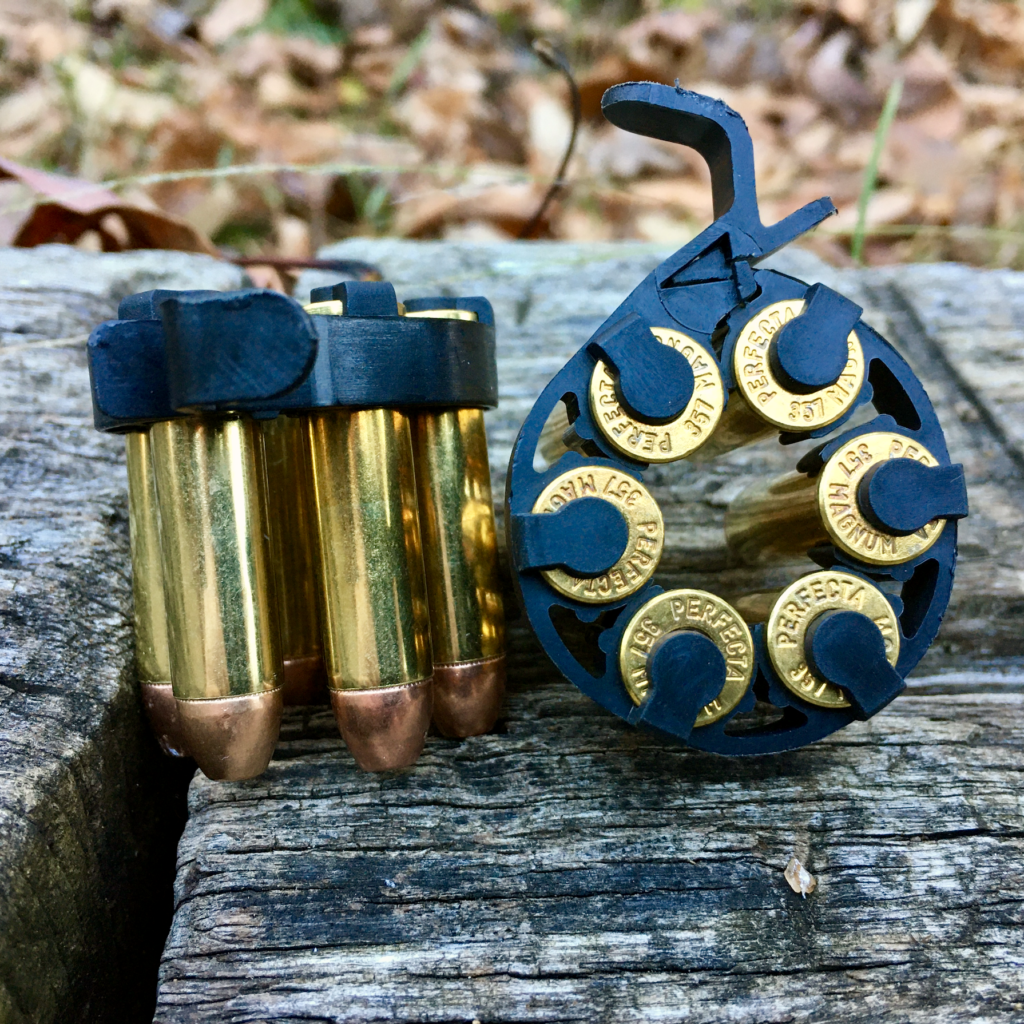
Using this loader required me to adopt a support hand reload technique, and insert cartridges with the left hand. I didn’t have a speedloader holder that fit this loader, so I clipped it onto my pocket. This probably improved its times a little bit, but since loading with the left hand is completely foreign to me, these two elements probably balanced each other out. Or maybe not – if you’re super interested in this loader they are inexpensive and I recommend you try a couple out for yourself.
Iterations: 15
Speed Test Average: 5.918 seconds
Speed Test Fastest: 5.07 seconds
Speed Test Slowest: 7.7524 seconds
Lost Rounds: Yes, lost one round each on runs 12 and 14
Drop Test: 33% pass, 66% fail. The Ripcord opened up on two of three drops. Though it didn’t release any rounds, the fact that it opens means rounds will be in misalignment, fouling the reload.
Size: 1.530″ diameter, 1.50″ height; note that the recorded diameter is larger than some other loaders. These loaders tend to get a bit lopsided so I measured the widest point. Also note that this measurement does not include the pull tab.
Availability: Average, only available for S&W L- and J-Frame, and compatible revolvers
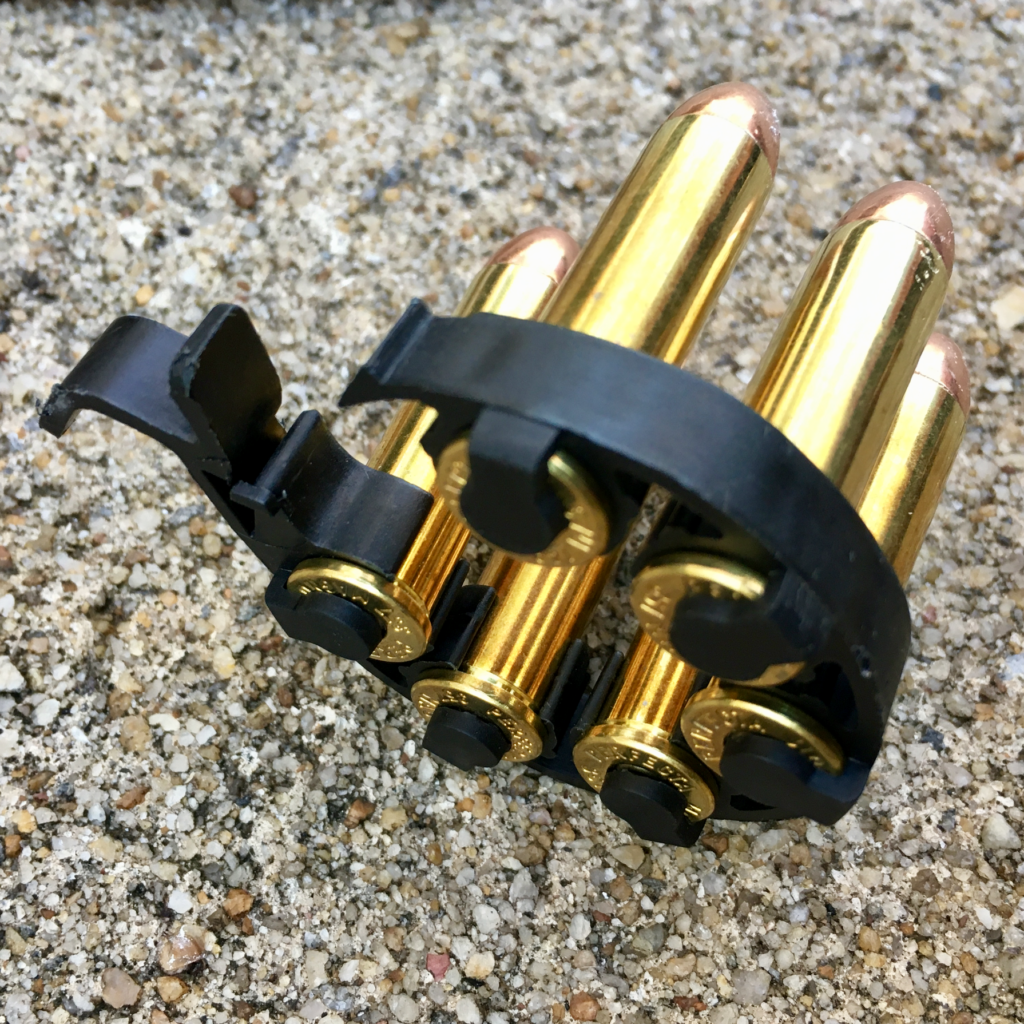
CK Tactical website, purchase on GoGearDirect website
HKS 586
The HKS is perhaps the most venerable loader on this list. It has traditionally been my least favorite of the mainstream loaders because of the “twistie,” non-linear motion required to release the cartridges. Oddly, this is one of the few speedloaders I have failed to review.
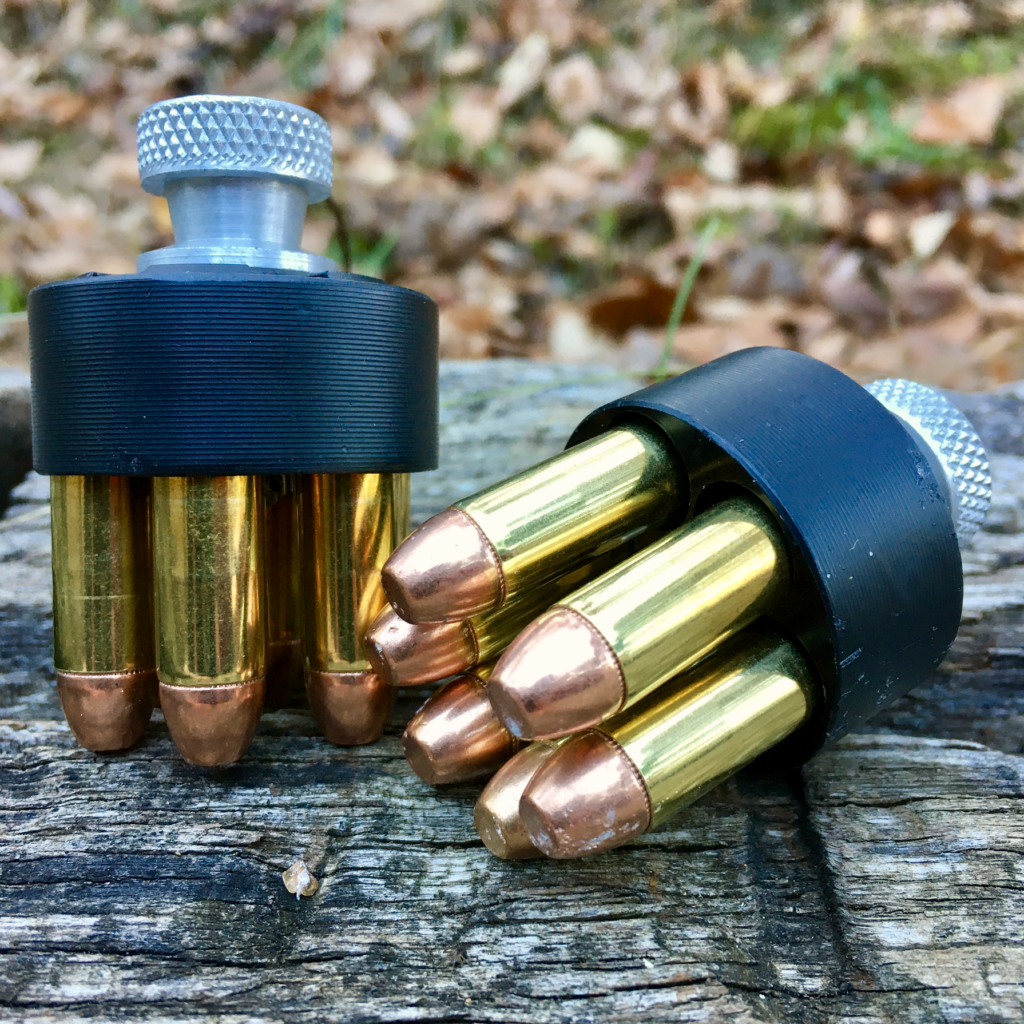
I actually came to like the HKS a lot more due to this test. The times were the most consistent of the bunch, the difference between the best time and worst time was only one second, and 9 of the 13 runs I did with this loader were within .25 seconds of each other (from 4.17 to 4.40 seconds).
Iterations: 13
Speed Test Average: 4.406 seconds
Speed Test Fastest: 3.90 seconds
Speed Test Slowest: 4.90 seconds
Lost Rounds: Yes, lost one round on run 7
Drop Test: 66% Pass, 33% Fail. The HKS loader released its entire cargo the first time I dropped it. It passed the other two drops with no problems.
Size: 1.420″ diameter, 2.165″ height
Availability: Excellent, available for a wide variety of revolvers and calibers including .22, .32, .38/.357, .41, and .44.
HKS website (opens to insecure page), Amazon (affiliate link)
JetLoader
The Austrian-made Jetloader has been my go-to speedloader for quite some time, at least for the limited line of revolvers it fits. The Jetloader has not only an inline motion like a couple others I tested, it is also spring-loaded. This speeds reloads quite a bit, as indicated by my times (this was the second fastest loader).
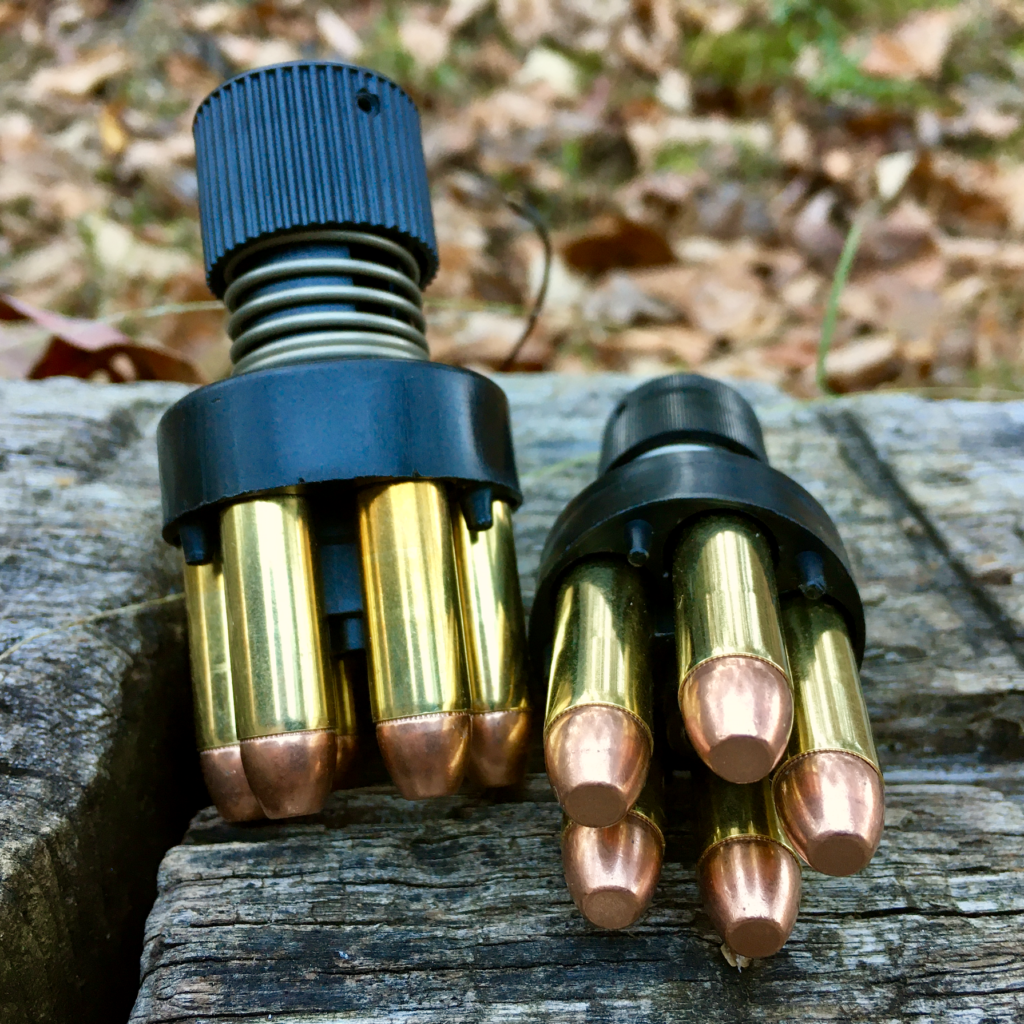
Perhaps more importantly, it does away with the requirement to get the gun perfectly vertical by reducing the cartridges’ dependence on gravity. A spring-loaded speedloader can also overcome the resistance imparted by dirty chambers and seat cartridges under force rather than gravity alone. Unfortunately this is also one of the tallest of the speedloaders evaluated here.
One peculiarity of the JetLoader worth noting: when the JetLoader releases its payload it imparts some torsion (rotational tension) to the cylinder. Even though my reloading technique (URR) arrests the cylinder, I did not find that this impacted the JetLoader’s efficacy at all. Nor did I find releasing the cylinder to allow the Jet’s torsion to exert itself improved the efficacy of the loader.
L-Frame Results
Iterations: 15
Speed Test Average: 4.110 seconds
Speed Test Fastest: 3.68 seconds
Speed Test Slowest: 4.70 seconds
Lost Rounds: No
Drop Test: 66% Pass, 33% Fail. The JetLoader failed when dropped so that it landed on its top. The force of the loader and payload landing on the knob relieved the spring tension holding the cartridges, and the JetLoader released all rounds.
Size: 1.495″ diameter, 2.945″ height
Availability: Average, only available for S&W L-, K-, and J-Frame, and compatible revolvers chamber in .38/.357
J-Frame Results
Iterations: 15
Speed Test Average: 4.163 seconds
Speed Test Fastest: 3.61 seconds
Speed Test Slowest: 4.87 seconds
Lost Rounds: No
Drop Test: 66% Pass, 33% Fail, same as above.
Size: 1.340″ diameter, 2.830: height
Availability: Average, same as above.
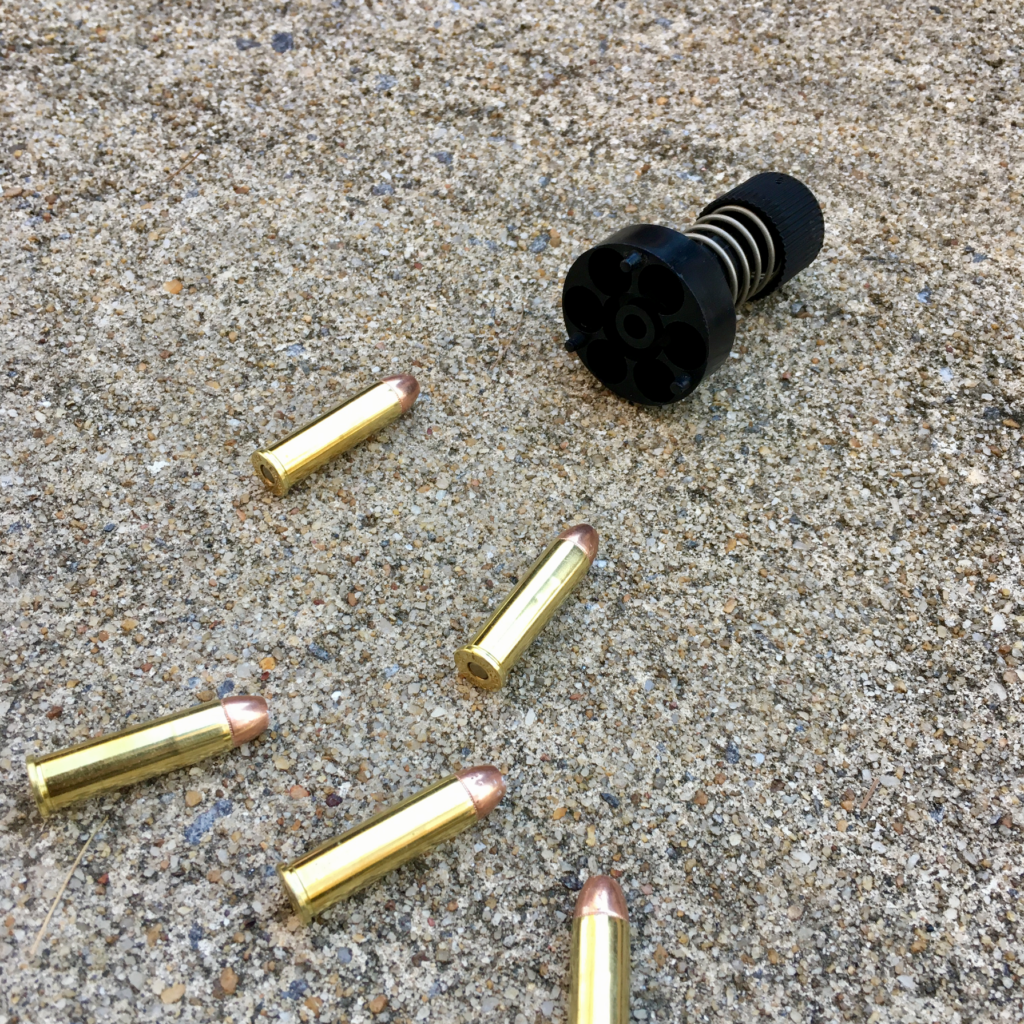
Pistoleer.com (JetLoader retailer)
Pachmayr Aluminum Competition
I reviewed Pachmayr’s “Aluminum Competition Speedloader” just a little over a year ago. I didn’t have a whole lot positive to say about it, but I’ve come around since learning one simple fact: it requires a dab of lubrication. I complained about how tight the release knob was to operate. Fortunately, I met Kevin at Greg’s class who clued me in that a quick shot of lube (I like a dry lube like Hornady One Shot) works wonders.
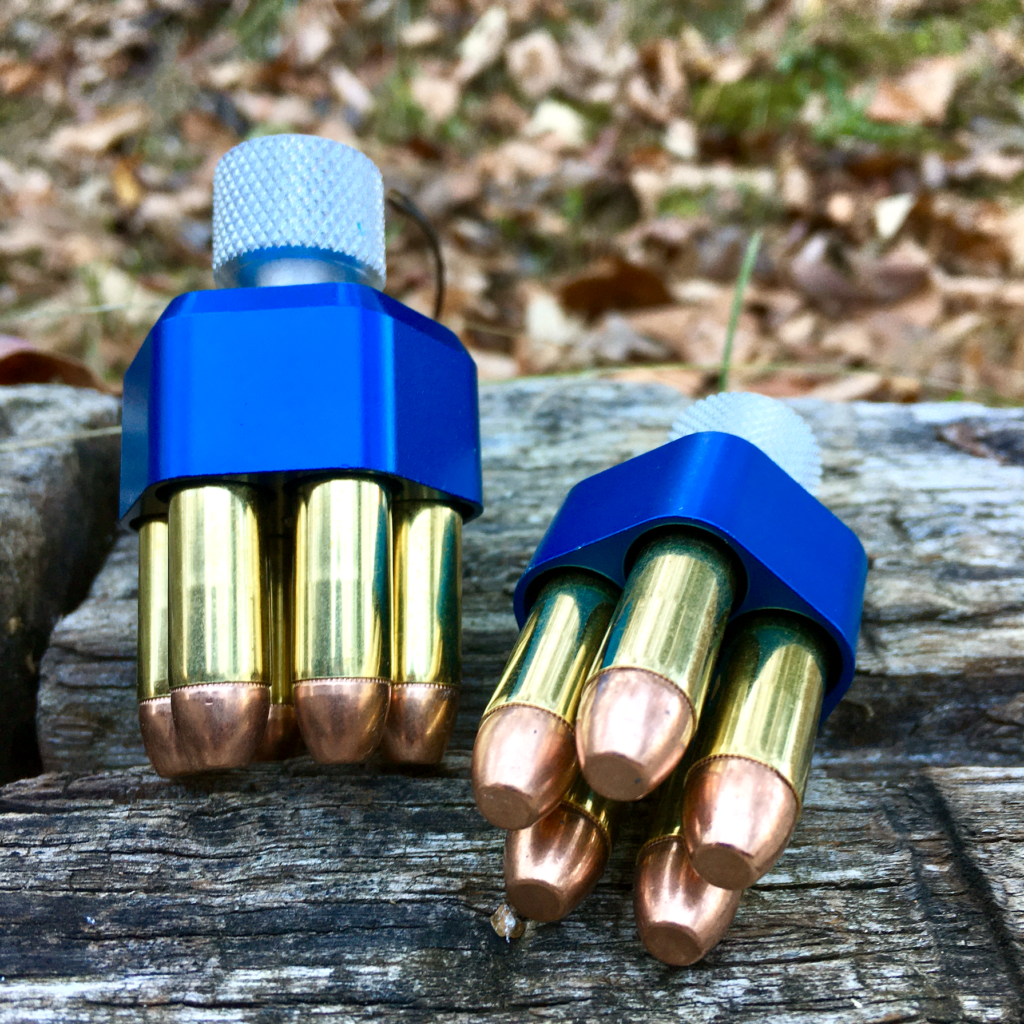
Aside from being constructed of aluminum, there’s another neat feature about this loader: the shape. It isn’t round, but polygonal, with excess material removed to lower its profile. Though the overall diameter isn’t much smaller than many other loaders listed here, the removal of excess material does make a notable difference around large grip panels. This loader also has a very large and sharply knurled knob.
The L-Frame Pachmayr had an almost unavoidable propensity toward losing a round or two. I have no idea why this is but out of 15 runs there were only 5 that resulted in a full six rounds in the gun. The J-Frame version was far better about this with the loss of cartridges occurring only on two runs.
L-Frame Results
Iterations: 15
Speed Test Average: 4.856 seconds
Speed Test Fastest: 4.11 seconds
Speed Test Slowest: 7.12 seconds
Lost Rounds: Yes, lost 1 round each on runs 1, 3, 5, 9, 11, 12, 14, and 15, lost 2 rounds each on runs 8 and 13
Drop Test: 100% Pass
Size: 1.505″ diameter, 2.565″ height
Availability: Average, only available for S&W L-, K-, and J-Frame, and compatible revolvers
J-Frame Results
Iterations: 15
Speed Test Average: 5.810 seconds
Speed Test Fastest: 4.83 seconds
Speed Test Slowest: 6.57 seconds
Lost Rounds: Yes, 1 round on run 1 and 2 rounds on run 11
Drop Test: 100% Pass
Size: 1.285″ diameter, 2.465″ height
Availability: Average, same as above.
Available from Amazon J-Frame, K-Frame, L-Frame in .38/.357 and .44 caliber N-Frames (affiliate links)
Revision CV Ammo Pod
(Added 24 January 2020) The Revision CV Ammo Pod is a molded plastic speedloader with an inline operation. I found that the Ammo Pod’s center pin was a bit too long to let cartridges seat before releasing, hindering smooth reloads. Otherwise this isn’t a bad loader.
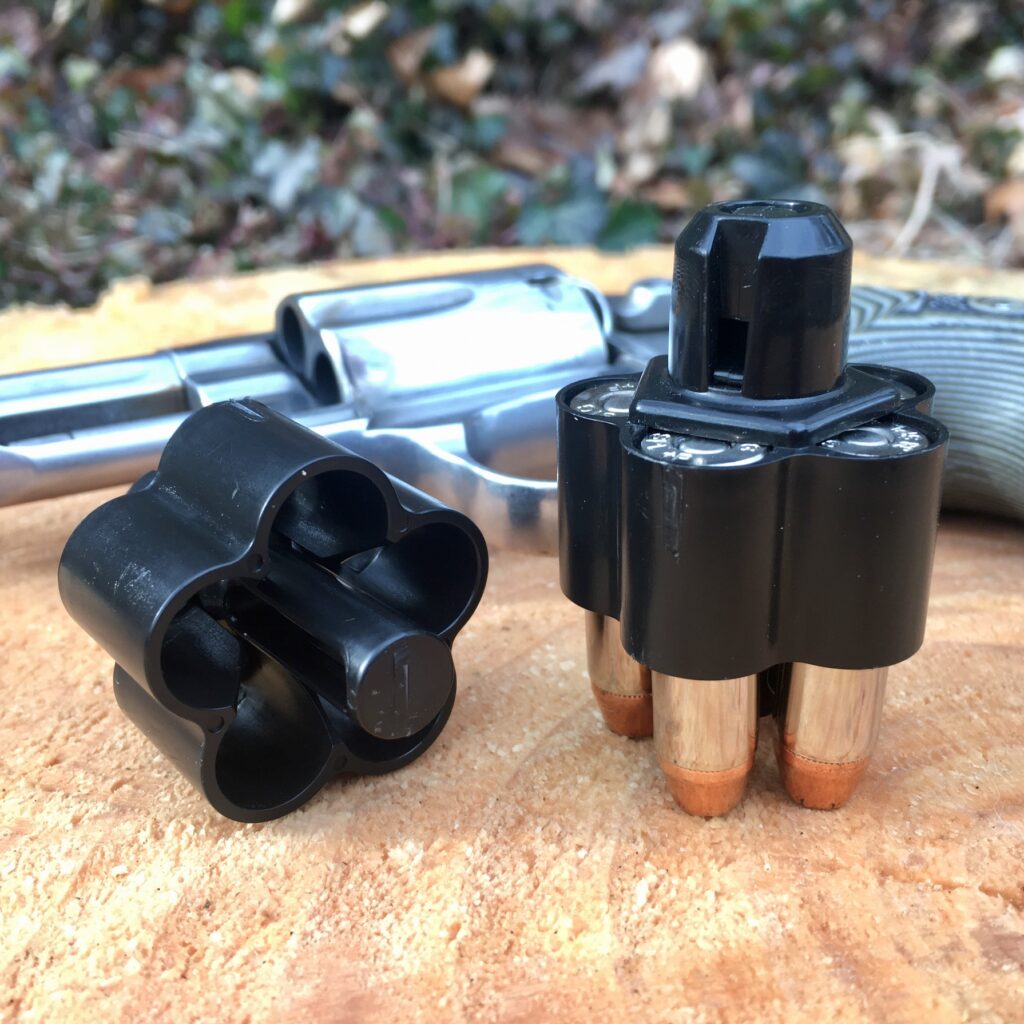
Iterations: 15
Speed Test Average: 5.455 seconds
Speed Test Fastest: 4.35 seconds
Speed Test Slowest: 8.07 seconds
Lost Rounds: Yes, lost 1 round on runs 8, 10, 11, and 15
Drop Test: 100% Pass
Size: 1.364″ diameter, 2.121″ height
Availability: Poor, only available for S&W J-Frames and analogs
Available from Amazon J-Frame, K-Frame, L-Frame in .38/.357 and .44 caliber N-Frames (affiliate links)
S. L. Variant
I purchased my S.L. Variants on eBay for approximately $60/ea, about three years ago. More recently I’ve seen them going for as much as $200 apiece (asking), but I don’t know if they’re actually selling for that or not. If I had known then what I know now, I’d have grabbed up every one I could find, regardless of frame size or caliber.
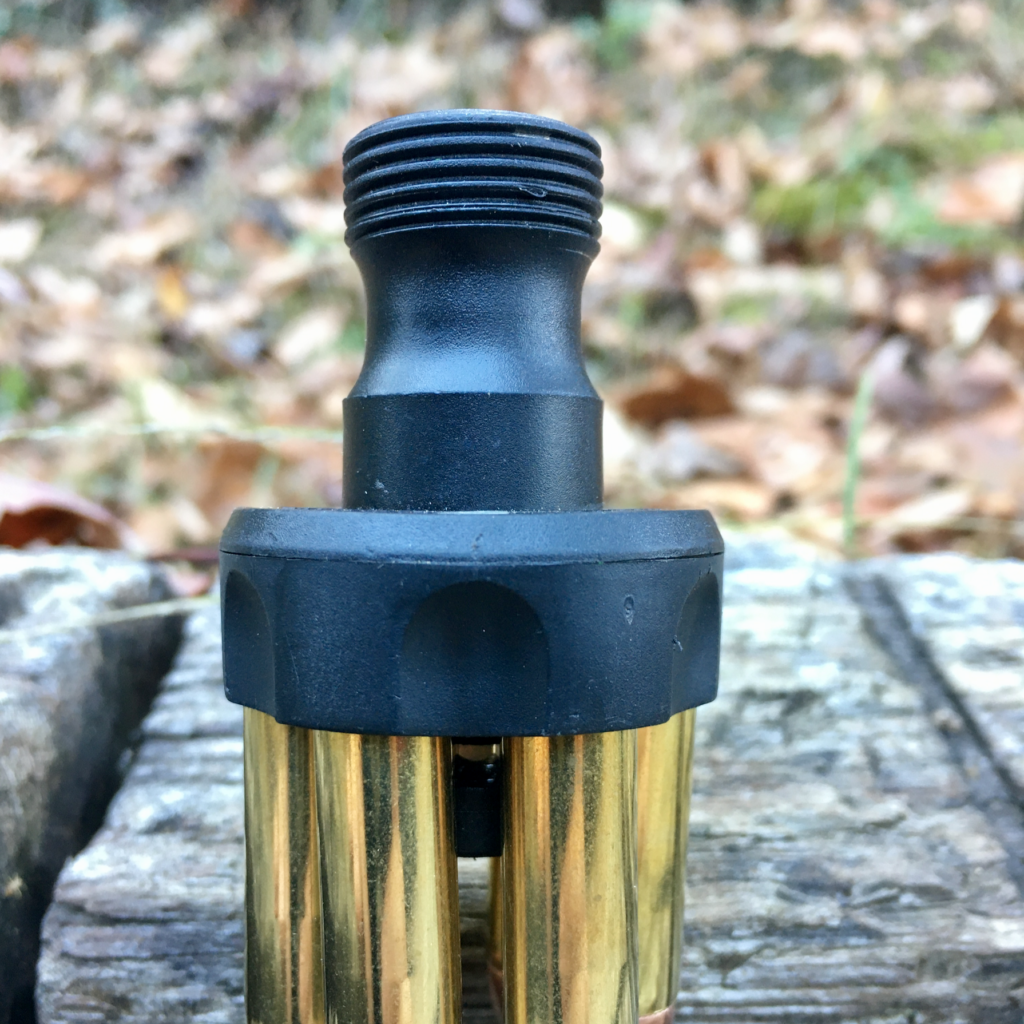
The mythical S.L. Variant was the first speedloader I ever reviewed, and the one I’ve long considered the best revolver speedloader. It is included here only for the sake of comparison (and perhaps a bit of novelty). The S.L. Variant was the undisputed king of speedloaders as long as it was available. After seeing the sole U.S. retailer of S.L.s list them as “out of stock” since before I started this blog, I think we can safely declare the S.L. Variant dead, with hopes of being proven spectacularly wrong.
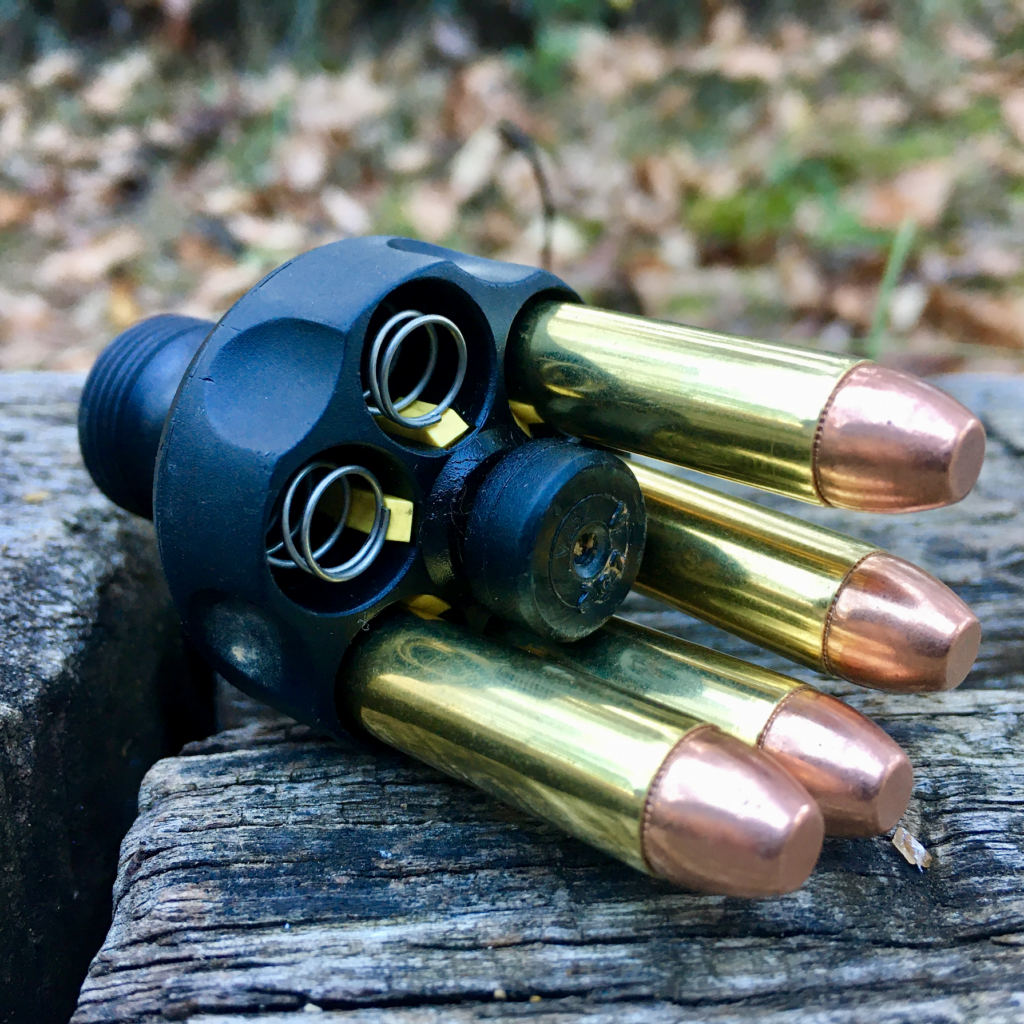
What makes this loader so desirable? First, each round is individually locked into place by its own tab. This makes loading the thing a breeze. More importantly, each and every cartridge is propelled into its chamber by its own spring. If you haven’t reloaded with an S.L. Variant, it’s hard to imagine what you’re missing, and it’s hard to overstate just how damn good this thing is. I skipped the drop test on this one. I only own half a dozen of these loaders and can’t afford to damage any.
Edited 02/29/2020: A reader wrote in recently and indicated he had conducted a drop test with a 5-shot S.L. Variant loaded with .357 Magnum 135-grain Gold Dot JHPs. He reported that the loader passed, 100%.
Times with the S.L. Variant were very consistent. Of the 15 iterations fired, 10 of them were within .26 seconds of each other.
Iterations: 15
Speed Test Average: 3.68 seconds
Speed Test Fastest: 3.14 seconds
Speed Test Slowest: 4.07 seconds
Lost Rounds: No
Drop Test: N/A
Size: 1.495″ diameter, 2.770″ height
Availability: Not available but models have been made for S&W J-Frames, K-Frames, 6- and 7-shot L-Frames in .357, and .44-caliber N-Frames.
BobMac’s (the importer of the S.L. Variant)
Safariland Comp I/II
The Safariland Comp I (J-Frame only) and Comp II (K- and L-Frame) are inline speedloaders. Externally they look a bit different but they are functionally identical. They work by locking the cartridges in by the rims. Pressing a center post in the middle of the speedloader against the revolver’s center pin releases them, and gravity pulls the cartridges into the chambers. The Safariland Comp II has long been a favorite of revolver cognoscenti like Grant Cunningham.
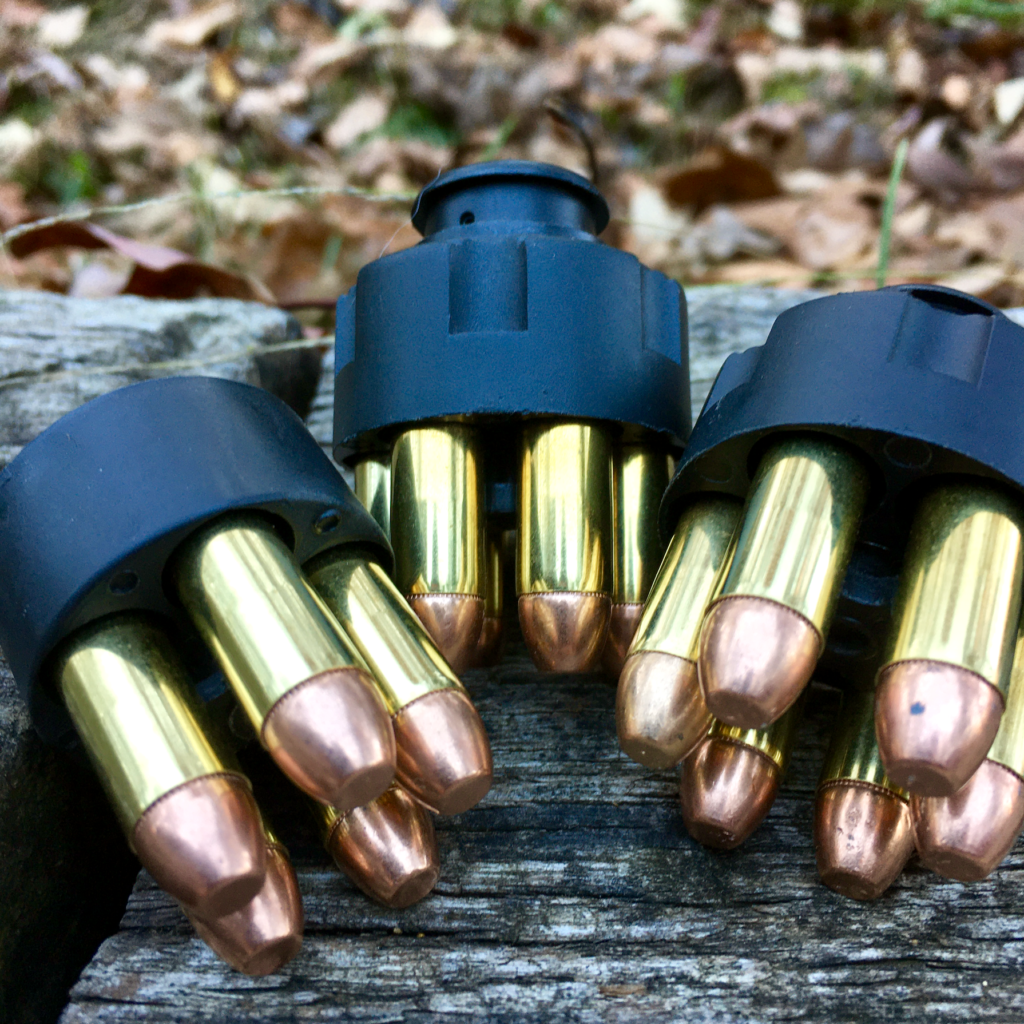
L-Frame Results (Comp II)
Iterations: 15
Speed Test Average: 4.307 seconds
Speed Test Fastest: 3.56 seconds
Speed Test Slowest: 5.29 seconds
Lost Rounds: Yes, lost 1 round on run 4
Drop Test: 100% Pass
Size: 1.530″ diameter, 2.000″ height
Availability: Average, only available for S&W L-, K-, and J-Frame, and compatible revolvers
J-Frame Results (Comp I)
Iterations: 15
Speed Test Average: 4.97 seconds
Speed Test Fastest: 4.02 seconds
Speed Test Slowest: 5.99 seconds
Lost Rounds: No
Drop Test: 100% Pass
Size: 1.335″ diameter, 1.735″ height
Availability: Average, same as above.
Available from Amazon J-Frame, K-Frame, L-Frame in .38/.357 and .44 caliber N-Frames (affiliate links)
Safariland Comp III
I’ve never reviewed the Safariland Comp III. This speedloader is intended for competition use and its size generally precludes it from serious consideration for concealed carry. Its larges size owes mostly to the large “handle” which conceals a spring, similar in form and function to that of the JetLoader. Also similar to the Jet, the Comp III propels cartridges into the chambers.
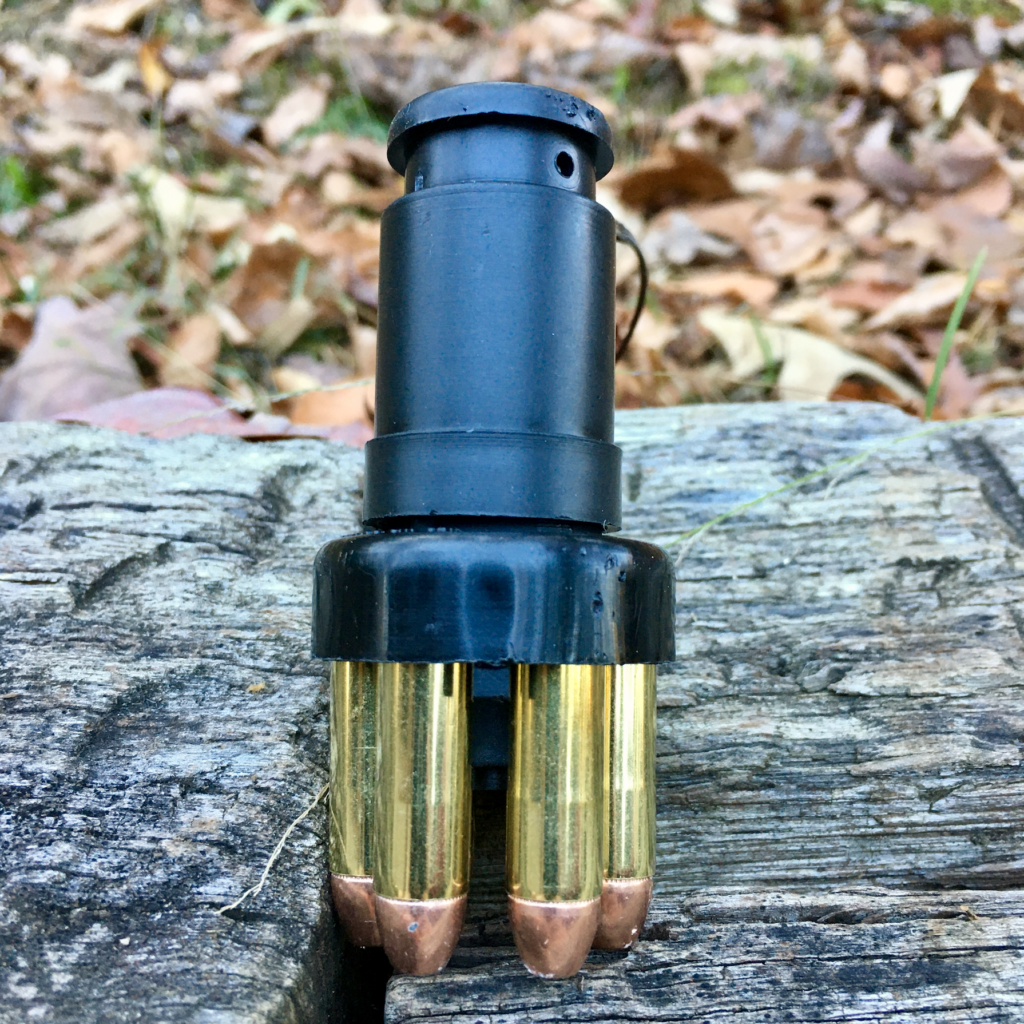
I was disappointed by the slow speeds of the Comp III; I had gone into this test assuming it was at least as fast as its little brother, the Comp II. I think that it is possible the large handle isn’t optimized for my hands, which are a bit on the small size.
Iterations: 15
Speed Test Average: 4.569 seconds
Speed Test Fastest: 3.70 seconds
Speed Test Slowest: 6.50 seconds
Lost Rounds: No
Drop Test: 66% Pass, 33% Fail, lost all rounds when dropped top-down on knob.
Size: 1.540″ diameter, 2.945″ height
Availability: Poor. Only available for S&W K- and L-Frames
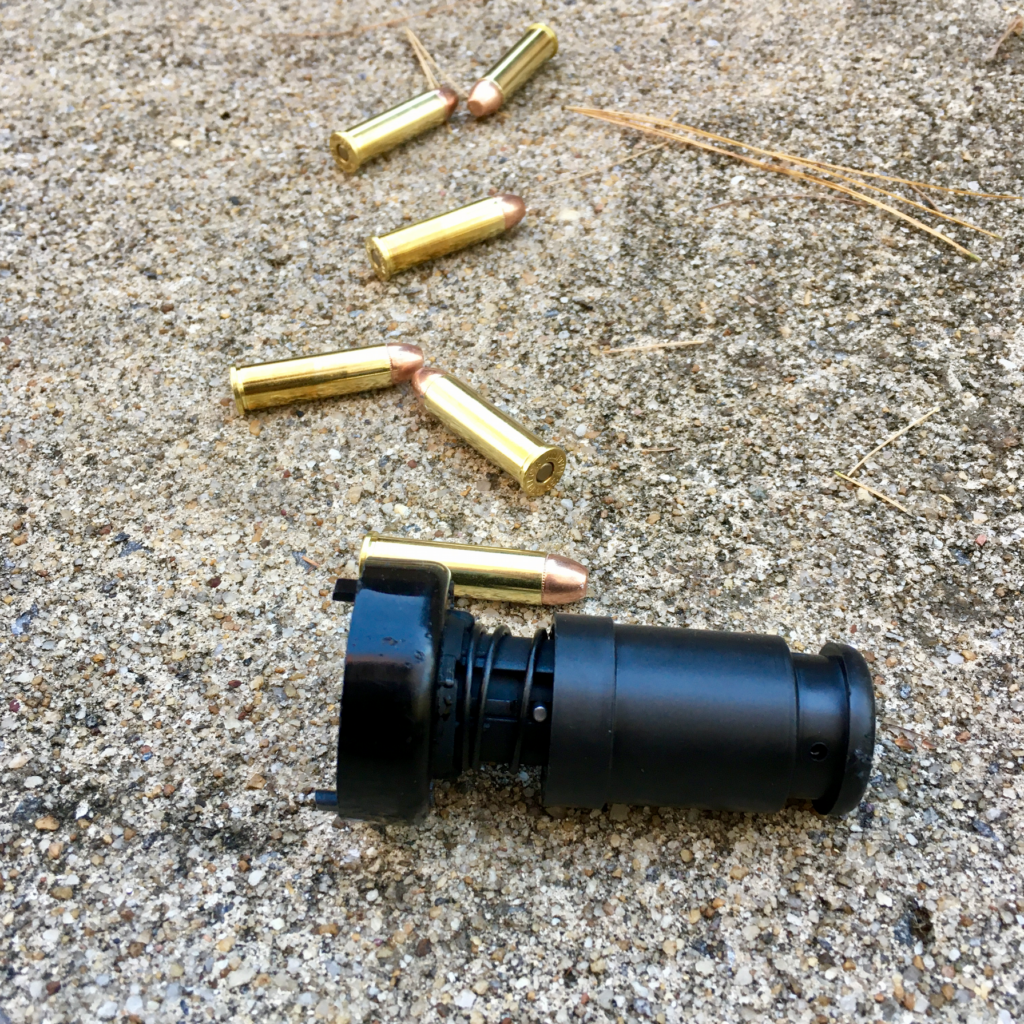
Comp III K-Frame size, Comp III L-Frame size on Amazon (affiliate link)
Speed Beez
The Speed Beez loader owes its lineage to the Dade loader. The Dade was a push-button design that held cartridges via a coil spring that engaged the cartridge rims. Like the Dade loader the Speed Beez has an inline, push button, and each cartridge is driven fully into the chamber by plungers rather than a reliance on gravity alone.
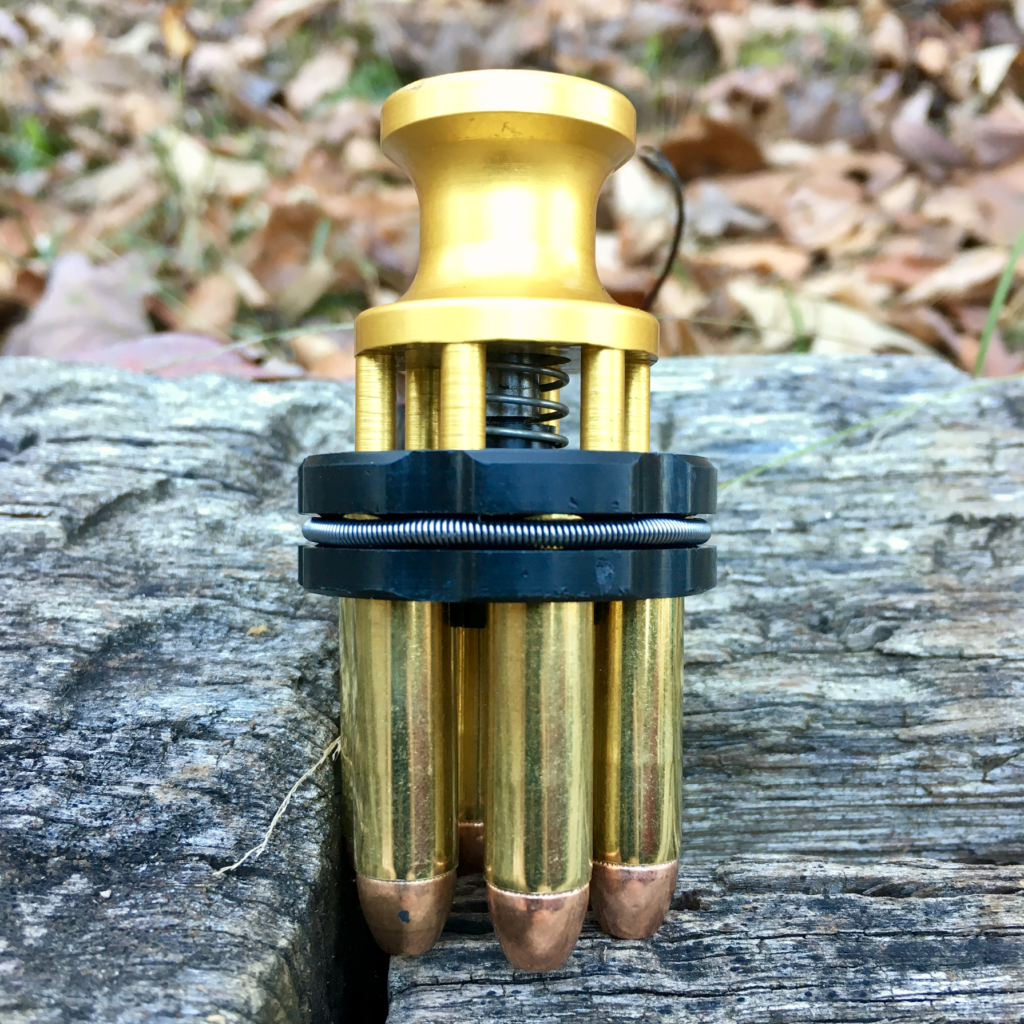
Unfortunately, the Speed Beez loader suffers some of the same old complaints against the Dade: namely, it loses cartridges when dropped. The Speedbeez is also the second largest and at $39/ea., the most expensive loader covered in this article.
Iterations: 12
Speed Test Average: 4.598 seconds
Speed Test Fastest: 3.80 seconds
Speed Test Slowest: 5.11 seconds
Lost Rounds: No
Drop Test: 100% Fail. Regardless of the attitude when dropped the Speed Beez loader lost 2 to 4 cartridges. The Speed Beez loader was also the only one permanently damaged by the drop test. The spring that retains the rounds was damaged.
Size: 1.595″ diameter, 2.945″ height
Availability: Excellent. The Speed Beez loader is available in a number of calibers including .22 LR, .32, .38/.357, and .44. Speed Beez also makes loaders for quite a few manufacturer’s models.
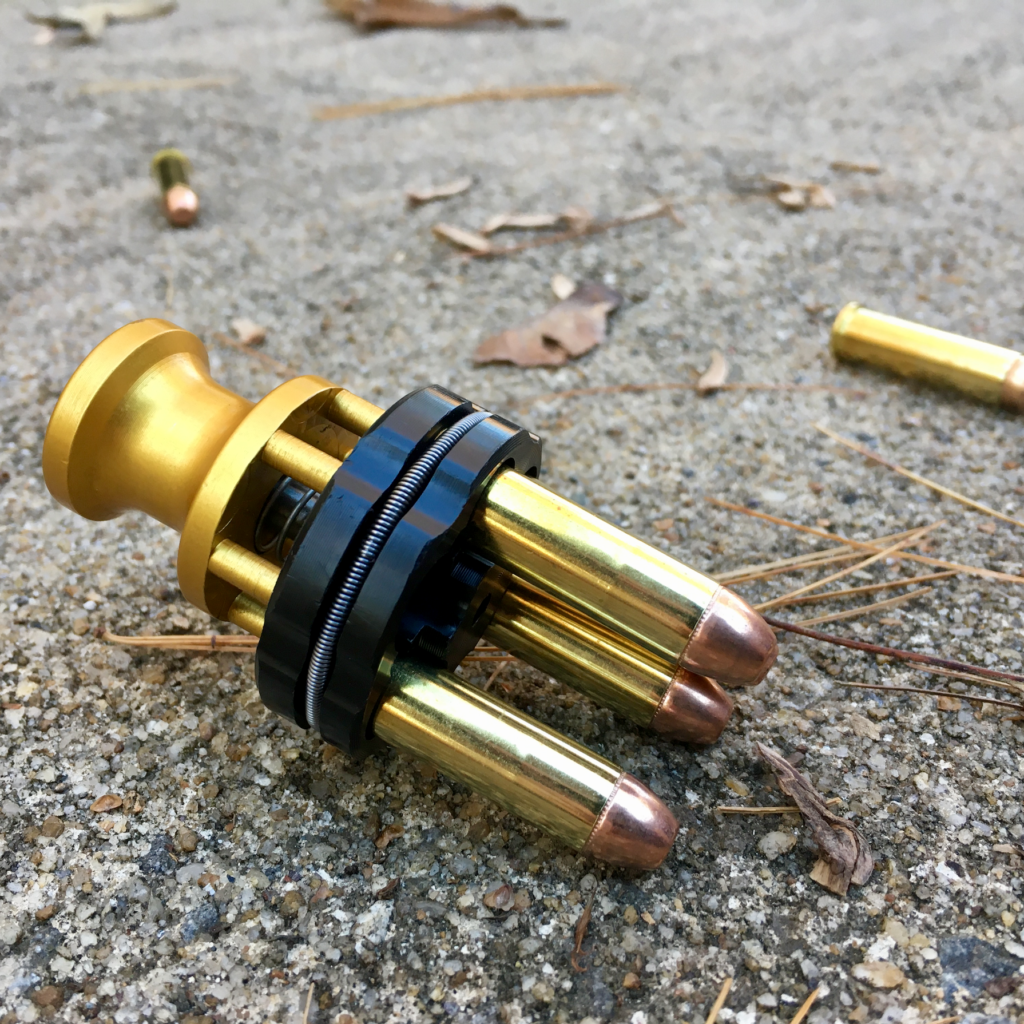
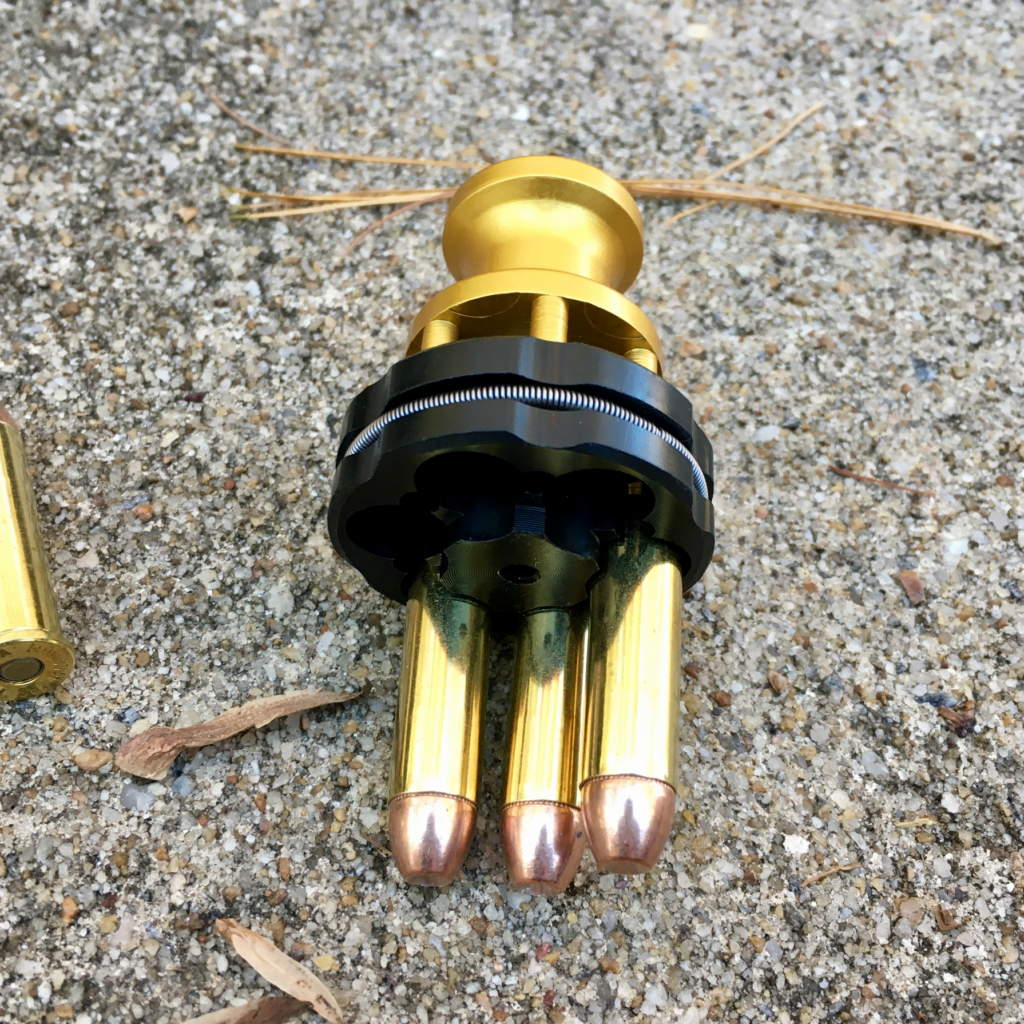
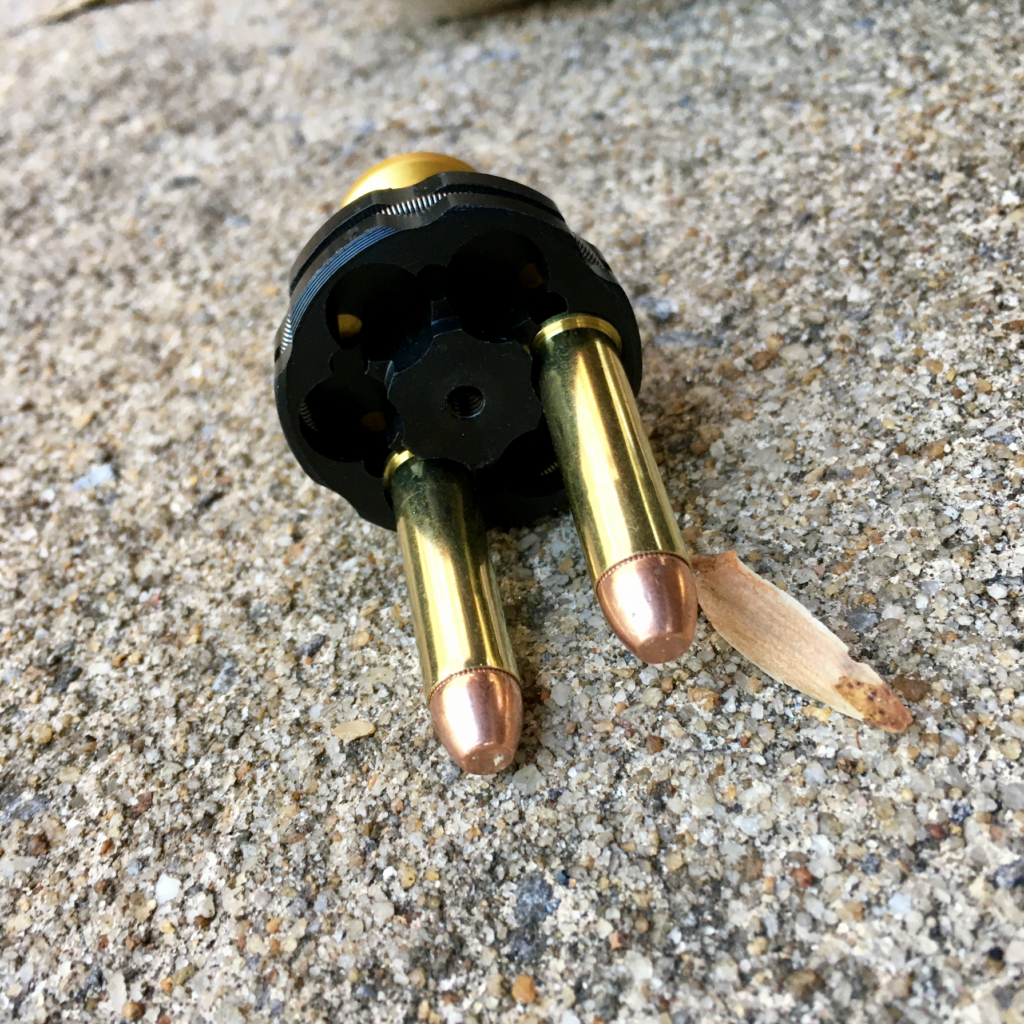
Speed Beez website, Amazon (affiliate link)
Semi-Auto Comparison
I was feeling pretty good with myself after some of the speedloader reloads. With each loader I’d have a couple runs that just “felt right.” I decided to record a few slide-lock reloads with my carry gun just to get a basis for comparison. The gun was my Nighthawk Custom Carry; while this is a custom 1911, there is no mag funnel or speed chute. It’s pretty much just a standard 1911 as far as the magazine well is concerned, and it’s probably not as fast as your typical double-stack magazine.
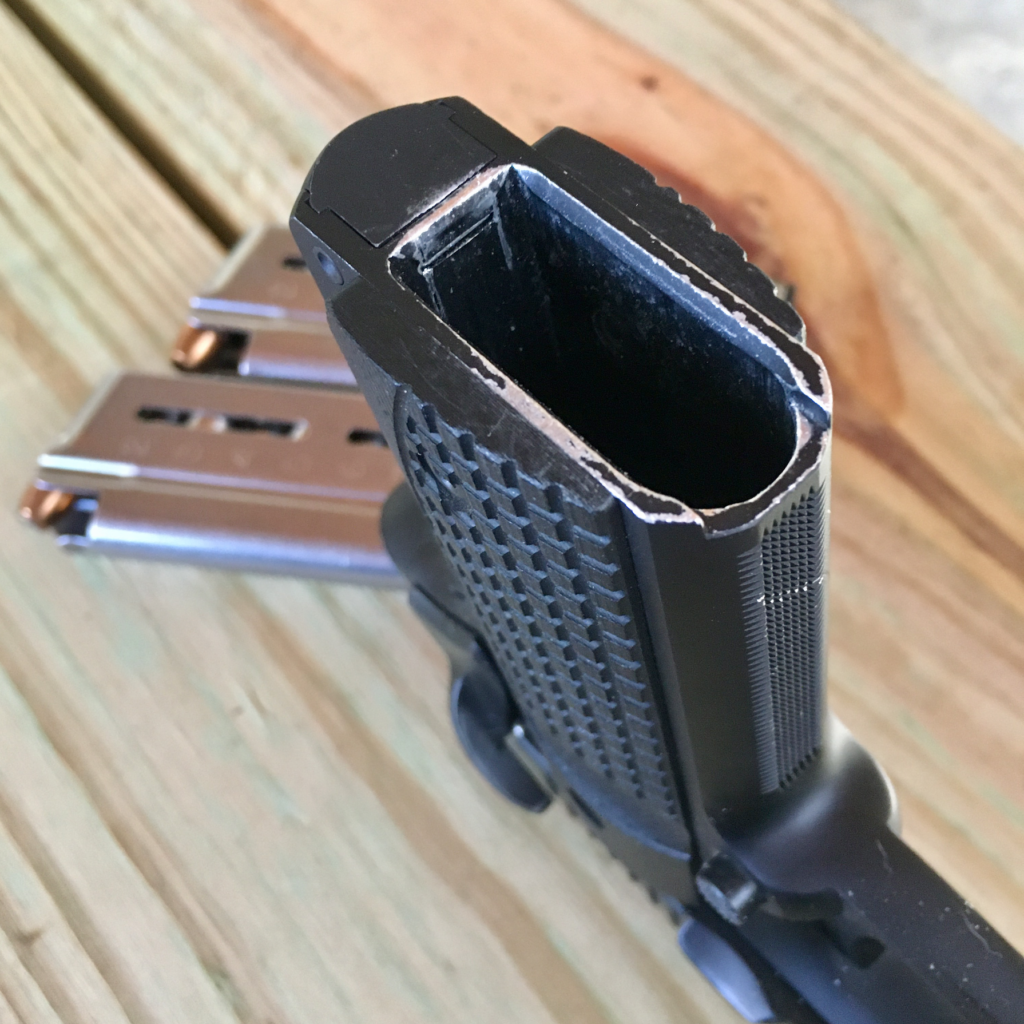
I ran all of these from concealment, in the same configuration I walk out the door with every day. While I gave some of the revolver speedloaders the benefit of the doubt, I ran this like I run it.
With 20 runs the average time was 2.13 seconds, with a best time of 1.88 seconds, and a worst time of 2.63 seconds. I know that’s not a blazing fast reload speed, but it’s also not terrible. More germane to this conversation, my worst time with this gun was better than my best time with the best revolver speedloader by half a second (S.L. Variant, 3.14 seconds) and my average is still a full second faster than my best time with the S.L. Variant.
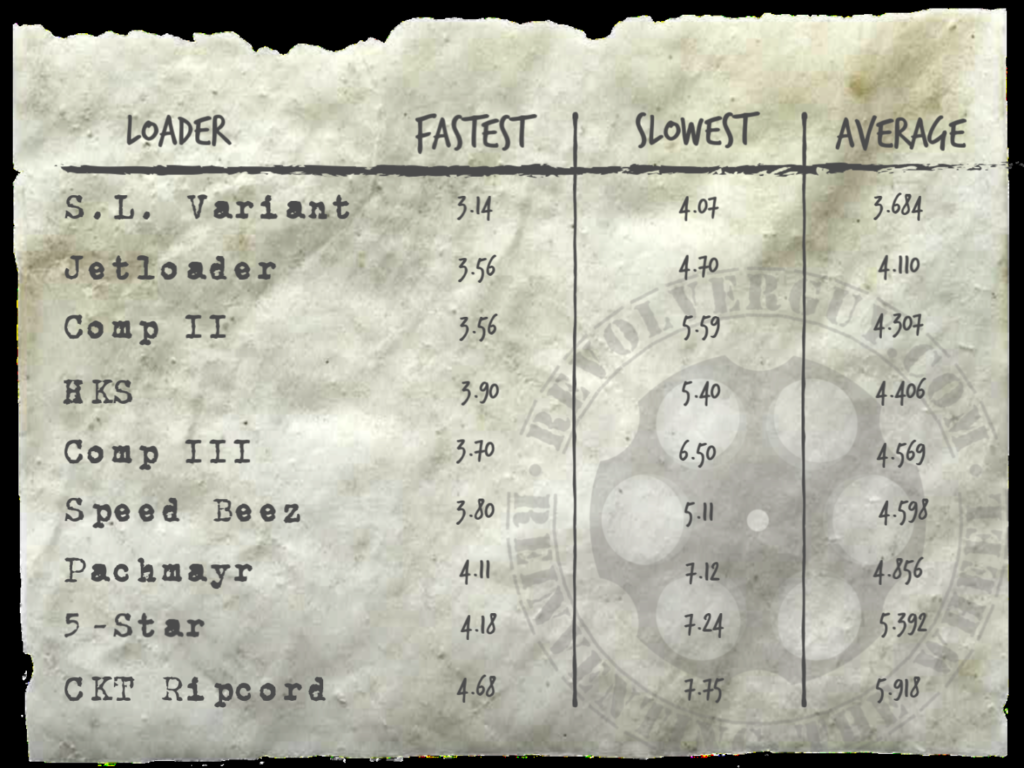
Part III: Conclusions
General Conclusions
Since the “speed” test was the biggest part of this, my conclusions mostly revolve around that portion. Let me reiterate once again that these are only one man’s results. I point that out for two reasons. First, my numbers here are only my numbers. Some of you are faster than me, and those who are are likely a lot faster. Most of you are probably not quite this fast, so take these numbers for what they’re worth: a basis of comparison.
Secondly, some of you may have very different results with different loaders. If you’ve worked exhaustively with a given loader, your overall results might be a bit different than mine. For example, the Safariland Comp III “should” have done better than it did. Still, a couple of things are worth pointing out.
First, the variation between any two loaders that are adjacent in average time is small (i.e. the difference between loader # 3 and loader #4), usually around 1/10th of a second. After testing 9 different loaders, that time really begins to add up, though. The difference between the JetLoader and the 5-Star is 1.25 seconds. That doesn’t sound like much but 1.25 seconds can be a very, very long time under the wrong conditions.
Next, I had considered dropping the worst run from each speedloader’s final tally. Some of them had a run that was considerably worse than the next-best run. For example, I had one run with the Comp III that was almost 7 seconds, but there was only one other run that was over 5 (5.13). I could have improved the averages (and maybe made myself look a little better in the process) if I’d simply dropped the worst one from each speedloader.
I decided that would be a bad idea. One thing I noticed is that my worst runs weren’t because clothing interfered with retrieving the loader, or I bobbled it, or whatever (those were dropped as alibis). The worst runs were when I was trying too hard to go fast. A phrase from high school baseball kept coming back to me; as a batter you want to have “soft hands”. If you grip the bat too hard you lose dexterity and flexibility, slowing your bat speed. I found that staying relaxed and having soft hands made my reloads go much faster. However, the slowest times are probably a better representation of what my hands will do under extreme stress than the best times or the averages.
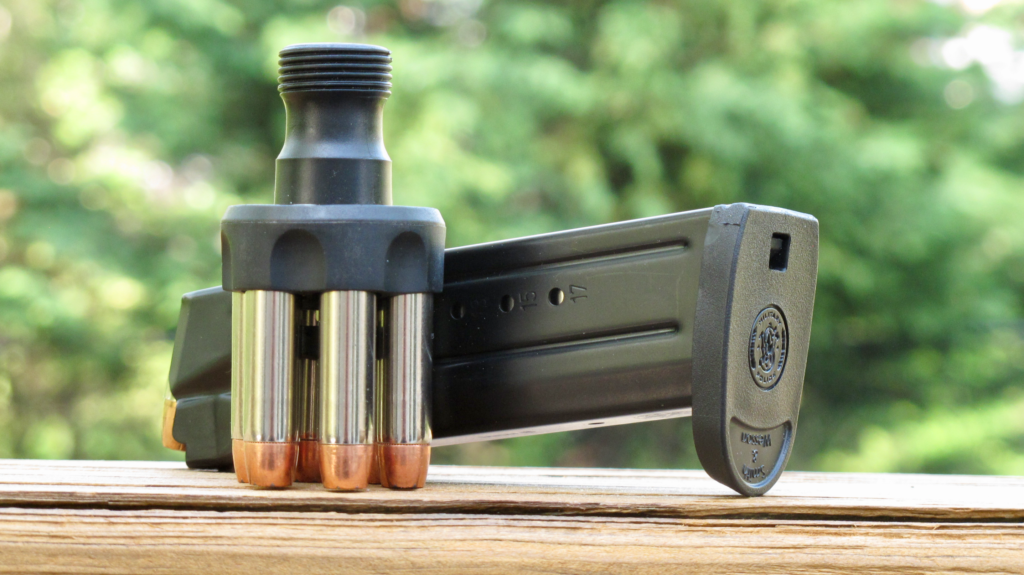
Finally, I’ve made the comment that “Speed Strips” should probably just be called “strips” because of the ponderous time it takes to reload with them (more on that to follow). I’m kind of arriving at the same conclusion with “speedloaders” – they’re certainly faster than loading loose rounds but compared to a semi-auto? They aren’t even in the same ballpark. Admittedly if I’d been doing as much practice with revolver reloads as I had with 1911 reloads that margin would narrow…but by how much?
Speedloaders in Large vs. Small Revolvers
The use of speedloaders in the J-Frame resulted, somewhat predictably, in slower speeds. Again, I did no direct, apples-to-apples comparison, but I attribute this to two factors. First, there is simply less space in which to work on a smaller revolver. The crane doesn’t swing that far out, leaving the cylinder closer to the frame.
Secondly, I drew from the pocket. I could have isolated and reloaded from a pouch, but again, a comparison between big and little guns wasn’t my goal. Instead, my goal in shooting the J-Frame from the pocket was to season this with a little bit of realism. Still, I’d like to offer just a bit of analysis.
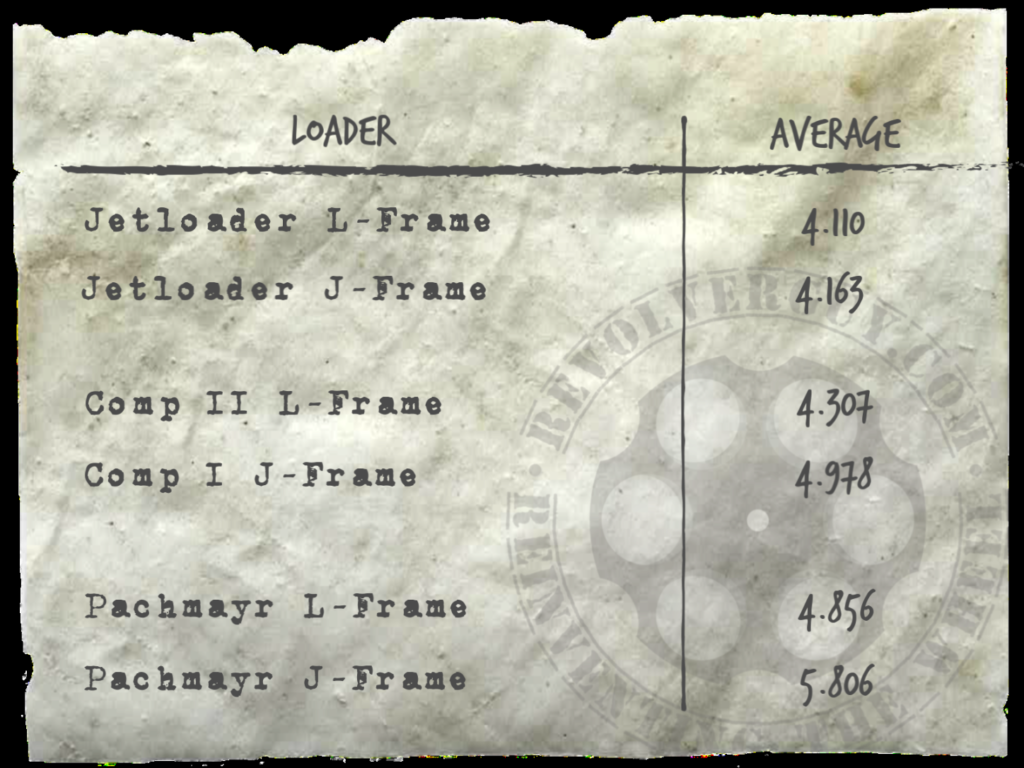
The slower a loader is, the wider the gap between the large and small version of the loaders. With the JetLoader (the fastest of those tested) the difference is only 5/100ths of a second. The Comp I/II was separated only by 6/10ths of a second, while the Pachmayr was almost a full second slower. Off hand, it seems that features of a loader’s design that slow its use are exacerbated in a smaller form factor, but again, with sample size of one it’s impossible to say for sure.
So… What is the Best revolver Speedloader?
Unfortunately, I was afraid of reaching this conclusion, but here we are: there really is no unassailable answer to the question, “what is the best revolver speedloader?” There isn’t a speedloader on this list that doesn’t have one problem or another. I’d like to tell you all to go out and spend a few hundred bucks on two or three S.L. Variants. Since that’s probably not possible even if you can afford it, I’d like to tell you to go out and buy JetLoaders,. But they they can spill rounds when dropped, and they’re fairly large. The Safariland Comps are widely available, pretty fast, hold their ammo when dropped. . . but they don’t make them for all of your guns.
To tell the truth, I’m less certain of my idea of what the “best revolver speedloader” is than I was when I began. And so we arrive at the real answer to the question, and it’s a two-part answer. I know this is going to seem like a bit of a cop-out, but I’m putting the ball back in your court.
First, it’s up to you to decide the best revolver speedloader for you. Sadly – unless you own a S&W revolver – that decision will be predominantly driven not by the features you desire, but by what loaders are available to you. It will also be driven by your desired speedloader carry method and preferred reloading technique. Most importantly, it should be driven by your own testing with your carry setup. You don’t really know how fast or slow a loader is in your hands until you’ve put yourself on a timer.
Second, training and practice with your chosen equipment are far more important than the equipment. The best revolver speedloader is the one you work with often – the man who works with a stick will defeat the man who plays with a sword. If all you can get to fit your revolver is a 5-Star or HKS? That’s OK – get busy! If you have a box full of S.L. Variants? That’s cool, too, but it still doesn’t excuse you from doing the work! If you commit to even a modest amount of dry practice – say 10 minutes per day for maybe a year – you can mitigate almost any equipment shortcoming.
Upcoming Articles
Stay tuned – there are a couple more parts to this series. We have another big comparison article coming. Similar to this one it will discuss the various reloading strips on the market and provide a lot of results from the field, comparing both the products themselves and their various methods of employment. Mike is going to weigh in soon with some of his thoughts about speedloader reloading. I know many of you might be tempted to question the necessity of carrying a reload at all, but don’t worry – I’ll address that, and my thoughts on revolver reloading generally – in a wrap-up piece. Bear with us; these articles take a great deal of time to put together, so the next one might be a few weeks down the road. In the meantime we’ll still be here with our regularly scheduled programming!
Support in-Depth Articles Like This one!
I would like to offer a huge ‘thank you’ to our Patrons. I asked and you guys responded last month. Donations increased by 58% and the number of Patrons increased by almost 70%. Without their support, in-depth articles like this simply would not be possible. If you’re not a Patron, please consider it. Thank you!

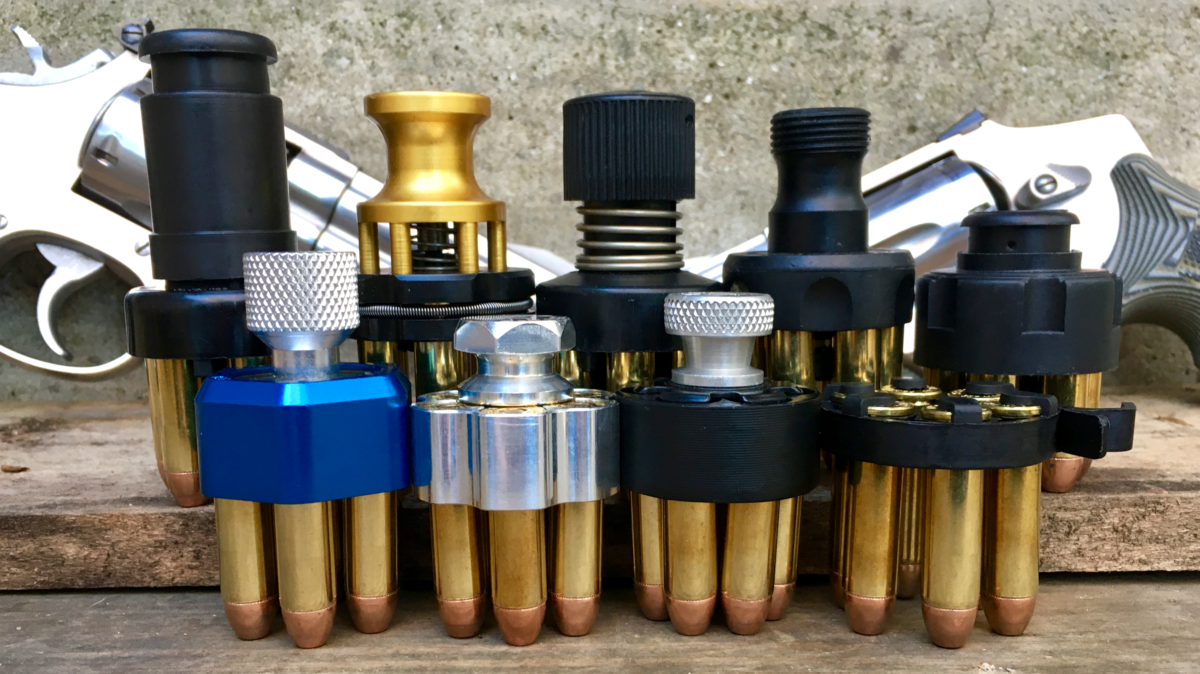

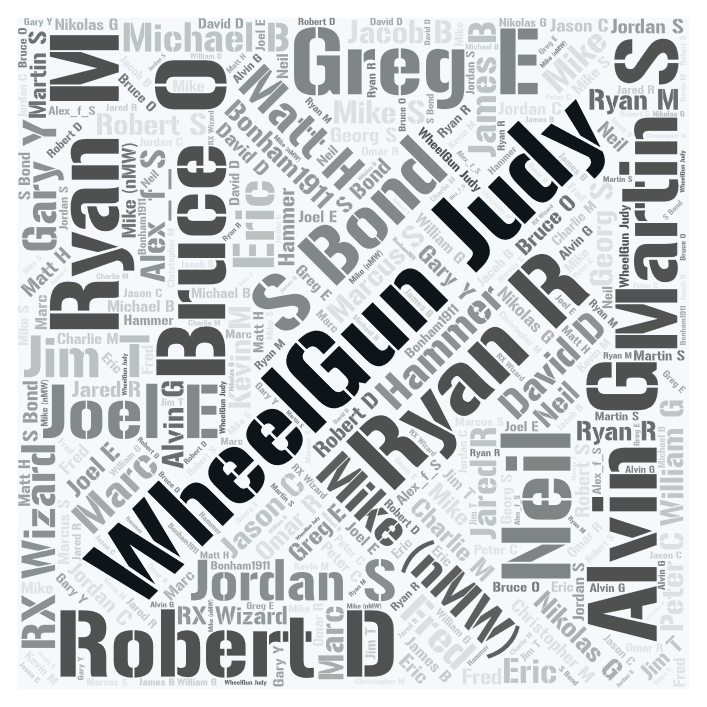
Wow, that’s a lotta work! I agree with your final assessment, no perfect choice out there. Safariland Comp 2s do have a slight tactile advantage over Comp 1s, so if you are in tune (I’m not now) they can be slightly quicker in the same weapon. Nice write up, thanks.
Agreed – Comp IIs can be extremely fast. Grant Cunningham recounts his fastest reload at 1.98 seconds with a Dan Wesson Revolver and a Comp II. That illustrates beautifully it’s less about the gear and more about the time you’re willing to work with your gear.
Thank you Justin for the excellent article and for accumulating all the data. In addition to the great speedloader info, your observations about “soft hands” are especially valuable. I carried a 686 as a cop starting in the 80’s with Safariland Comp II’s. Getting into competition years later, I invested in many Comp 3’s that worked great when there was no stopwatch running. Under the clock I could not make the Comp 3’s work consistently and became a soup sandwich spectacle beating on loader and gun futilely trying to get cartridges in the cylinder. I switched back to Comp II’s and did much better. Repetition matters, Comp II’s were also more forgiving of my stress induced “hard hands”. Interestingly, I don’t have that issue with Jet loaders as similar as they are to the Comp 3. I remember a brief period (early 2000’s if memory serves) when you could order SNL Variants from Dillon Precision. I ordered one each for a .44 and .45 N frame for the princely sum of 29.95 apiece. I also wish I knew then what I know now! Showing your times with your Nighthawk was also valuable. Something to think about in the gun you trust your life to. Thanks again.
Wow! thank you very much for all of the work that you undoubtedly put in on this comparison.
I was pleasantly surprised at how well the HKS held up in speed to the competition. Even though it probably isn’t the best loader out there, I’m kind of inclined to stick with HKS just because they are prolific, durable, and made for a large variety of revolvers. Your article definitely shows that if you put in the work, you can get comparatively fast with an HKS to a loader that’s likely inherently faster like a Comp 2.
Brendan,
I totally agree with you that an HKS that is worked with can be pretty solid. With a few hours of work with the HKS I’m sure that just about anyone could best my times. Thanks for writing in,
Justin
Wow, very comprehensive! I only have extensive experience with one of the brands/configurations mentioned here – the Safariland Comp series. The J, K and L frame sizes, to be specific. As a competitive shooter I loved the Comp III, and with minor modifications and a ton of practice I became quite proficient with them. I also found them to be quite durable and never experienced a single breakage or failure over a couple of years worth of hard use. Now that I only own 5 shot snubbies I am using the Comp I loaders. These took a bit of getting used to, as pressure needs to be applied to the rim of the loader rather than the center to get it to vomit the rounds. Even with practice my reloads are considerably slower than they were with the Comp III, but a big difference is that actually the Comp I’s and I only ever used the Comp IIIs in competition due to their large size.
As a side note, but a very important one, both the Comp IIIs and the Comp Is work with the GP100 (Comp IIIs) and the SP101 (Comp Is) PERFECTLY. I don’t currently own any Taurus or Rossi revolvers so I can’t say for sure, but I believe the Comps work great with both of those brands as well. So they are absolutely not just for the Smith revolvers.
Finally, not to throw a wrench in the works, but I just recently learned about a new player in the loader game. I’m going to pick some of these up soon and I’m eager to try them out. The company is called Revision CV. Here’s a link to their site: http://www.revisioncv.com/catalog/3
Great stuff as usual Justin – you guys are freaking top notch!
Ian,
Re: GP/SP, and Taurus/Rossi – totally understood. Rather than list out every brand and model I tried to make clear that they fit J/K/L and guns with the same cylinder geometry. That still leaves a lot of stuff off the list – especially some of the newer wheelguns.
Thanks for turning me on to the Revision CV! It immediately reminds me of the Bucheimer/Feathertouch of the 60s and 70s. I will try to get my hands on a couple and write them up on their own, now that we have a big body of data to compare them to.
Glad you enjoyed the piece,
Justin
Justin either has the patience of Job, or you take a lot of sanity breaks. I got tired thinking about having to do all those test runs – better thee than me !!
I believe it was the late Col. Jeff Cooper who opined that blessed are those who, in the face of death, think only about the front sight. When your six rounds are gone, it’s the speed of the reload that is the weak link in getting back into the fight.
In the long run, the best speed loader is the one that
(a) holds the rounds securely in all realistic situations,
(b) you can work the most efficiently in the shortest possible time with the least interference from Maj. Fumblefingers,
(c) allows you to achieve the ultimate objective – get back on the front sight.
All speedloaders are going to have their quirks. It boils down to which one(s) you can manipulate the best without having to compartmentalize the process.
Shooting IDPA with a revolver can do wonders in shaking down your equipment for issues, helping one getting their reload down pat, and getting back to the front sight.
Personally – on my K/L frames, it’s Safariland Comp II. On my J frames, it’s the HKS, mainly because for me, the knob on the Comp I is just too d*@& small for my finners.
Just as a personal anecdotes in response:
1. In regards to Maj. Fumblefingers, I totally agree. That’s why the HKS is a no-go for me. I have managed to come up holding the knob far too often for my own comfort, and having to twist the knob is still not my preferred technique.
2. Most of the patience required here was reloading the Comp I with that tiny knob!
3. Finally, I’m rather reticent to discuss my own experiences in this matter. But to borrow Cooper’s lexicon, as one who has “seen the elephant” I’m inclined to agree with that assessment. However, as one who also firmly believes the adage that in crisis one does not rise to the occasion but rather defaults to his level of training, enough high-quality repetitions render the complex possible, even under great durress.
Thanks for the comment!
Good info. Realistic and definitely applicable to all of us. Realizing where you’re at with speed loaders allows me to compare myself with you and come to a reasonably accurate assessment of my capabilities, or lack thereof. Thanks for taking the time on this, it really helps put things in perspective.
Practice, practice, practice.
A thousand times with an autoloader and its magazines and
you should get good at it and the reloading becomes second
nature.
A thousand times with an HKS or Safariland on a Smith revolver
and you should get good at it and the reloading becomes second
nature.
The key is the reloading exercise becomes so instilled in the shooter
that he/she really doesn’t have to “think” about it. Using only
HKS, the twist isn’t even noticed. Using the Safariland, the push
isn’t even noticed.
But switch back and forth, even after dozens of repetitions, and
some confusion and loss of time is inevitable.
Pick one and stick with it. For me it was the HKS (although I
do have quite a few Safarilands).
Excellent review Justin!
I have limited experience with speed loaders but working with an HKS and the Pachmayr at Greg’s class, I realized I preferred the Pachmayr. The knob was easier to for me to manipulate due to the increased size. Additionally, I found that with the HKS, the knob rotated clockwise (Into the frame of the revolver) vs the Pachmayr that rotated counter clockwise (Away from the frame). With my larger hands, I continually fought the HKS and my fingers interfering with the reload due to the smaller knob and how it rotates . I do not have that problem with the Pachmayr.
I look forward to your review on the strips.
Keep up the great work! This was by far the best comparison article I have ever seen on Speed loaders.
Bravo, buddy! What a mountain of information you’ve provided here!
Honestly, I would have been disappointed if you had declared one of these models “the best,” because it would have reminded me of the old gun rags that declared a new “ultimate” this or that every month. There’s a lot of room for personal preference here, and you’re right to recognize it.
I agree with your take on cost, and think you included some important perspective there. Speaking of cost, I just looked up my old receipt from Bob Macs . . . yep, the SL Variants were $30 a piece when I bought them back in October of 2010. I should have bought a bunch more!
The best speedloader is the Speedbeez.
I say that because they are one of only two companies I know of making a loader for my revolver of choice, an LCR in .327 federal. The other is 5-Star, and the push-through will always be faster than a twistie. More expensive and less secure, but faster.
Now for anyone with a more popular revolver, my answer is completely worthless.
I have no qualms with HKS, but I really like 5-Star’s speedloaders. They’ve run flawlessly for me.
I wanted to like Pachmayr’s speedloaders, and my opinion on them was initially positive. But the more I tried using them, the more unreliable I found them to be. It’s simply too difficult to turn the knob (weak-handed primarily, but even dominant at times) due to the amount of tension in the knob + lack of space between loader and frame to get a good purchase.